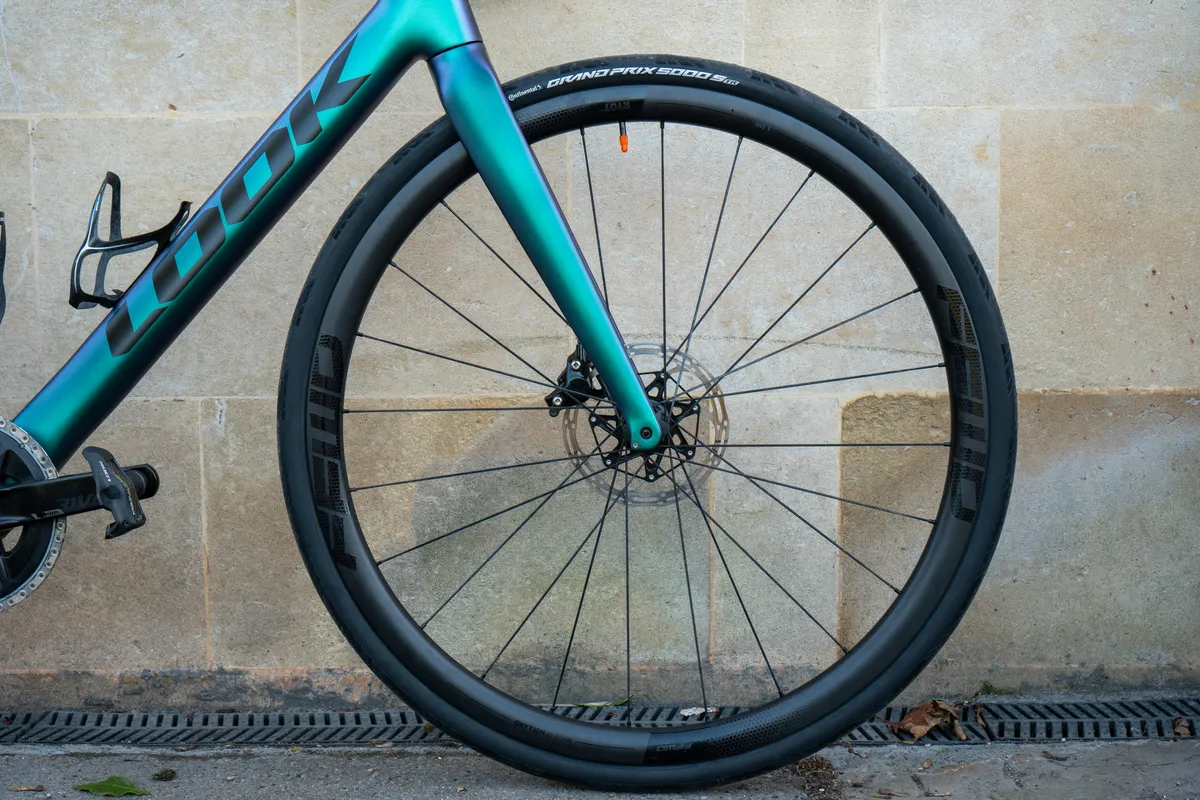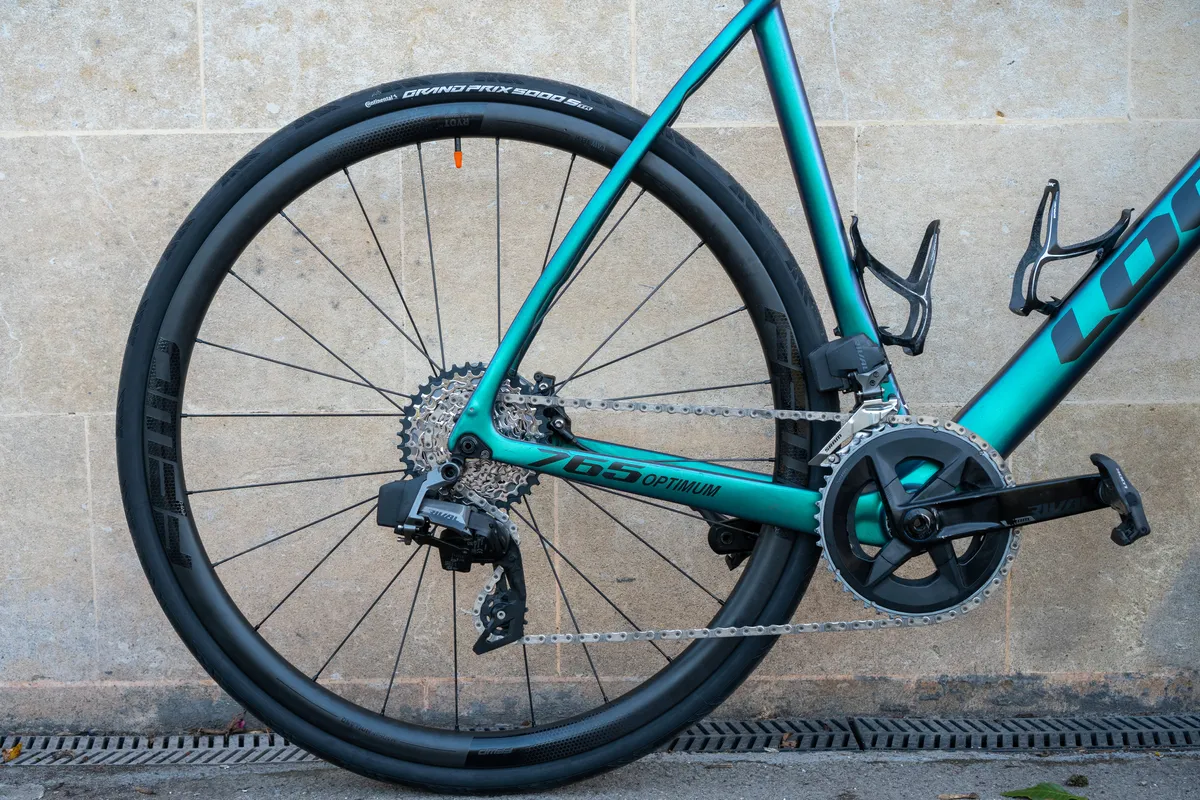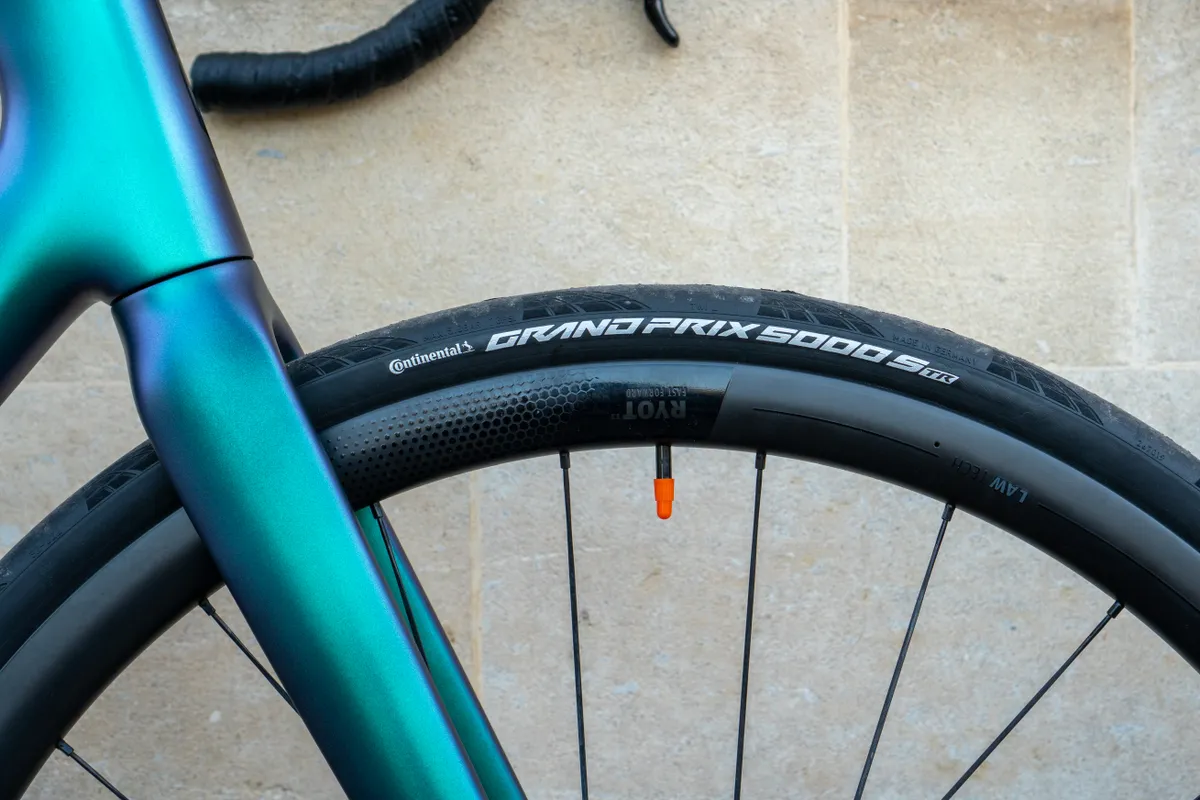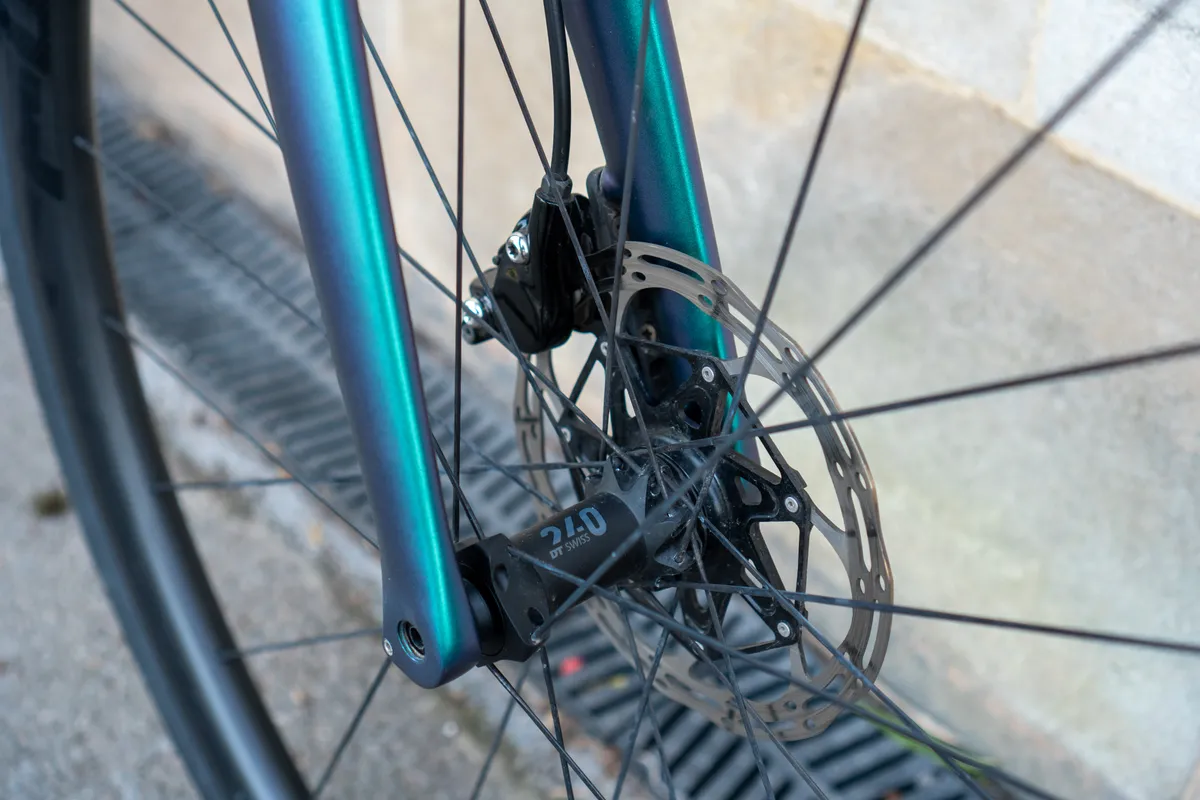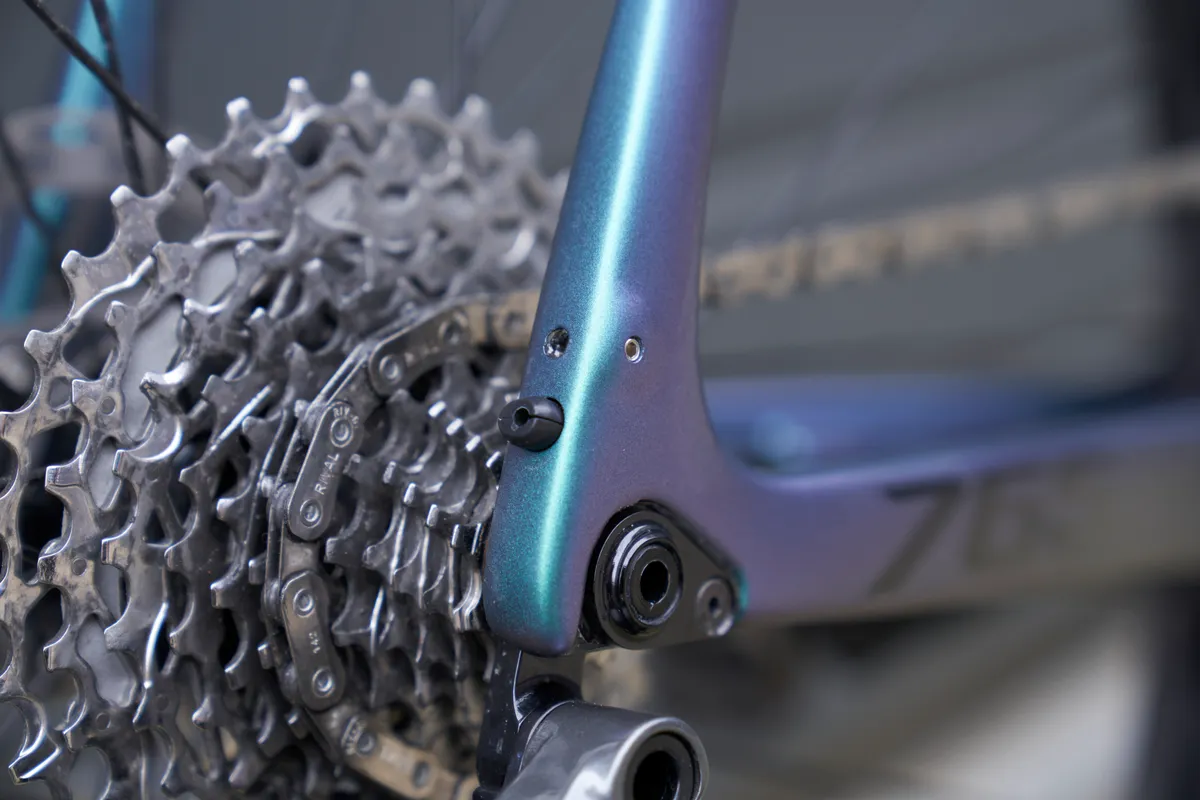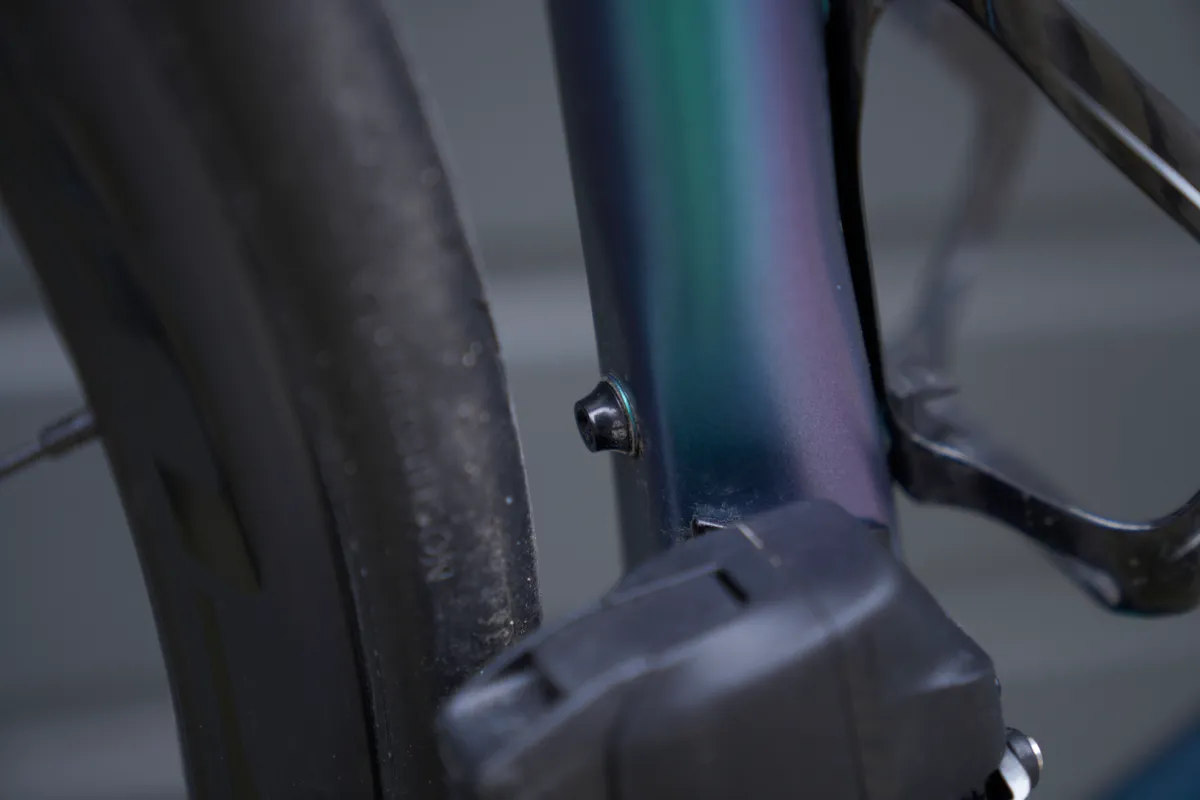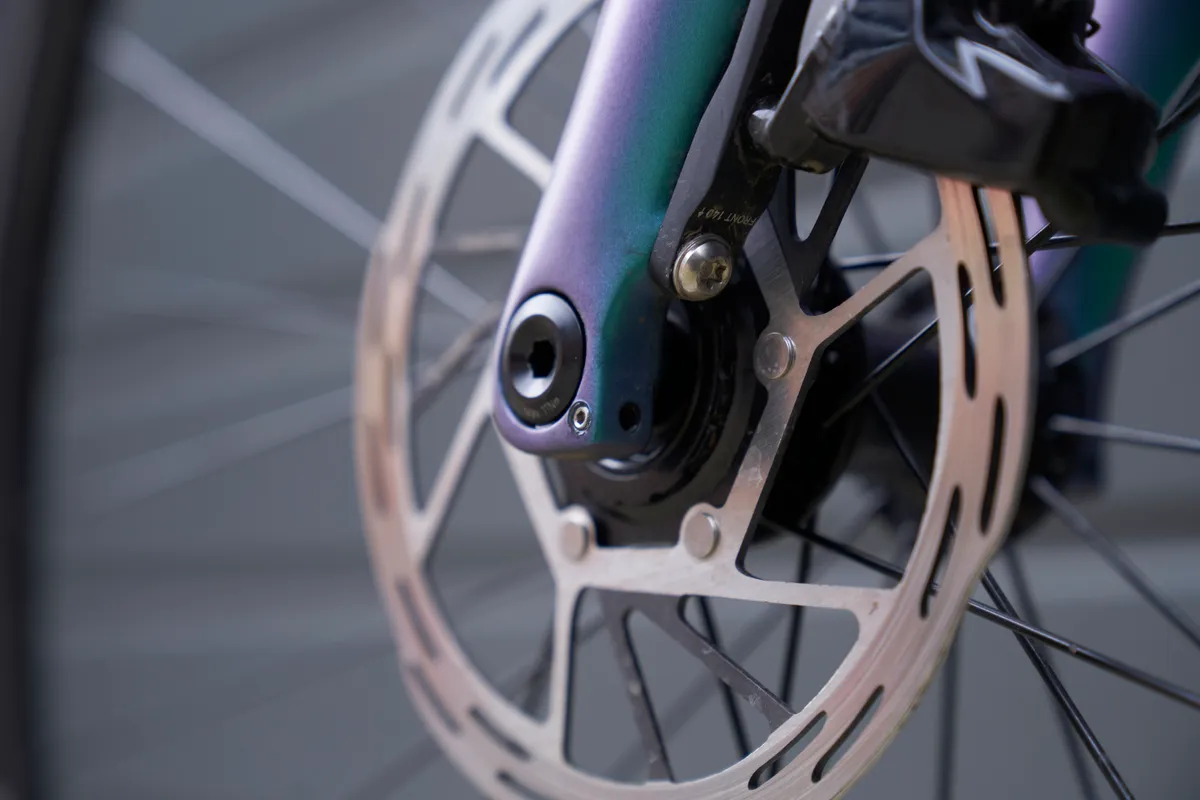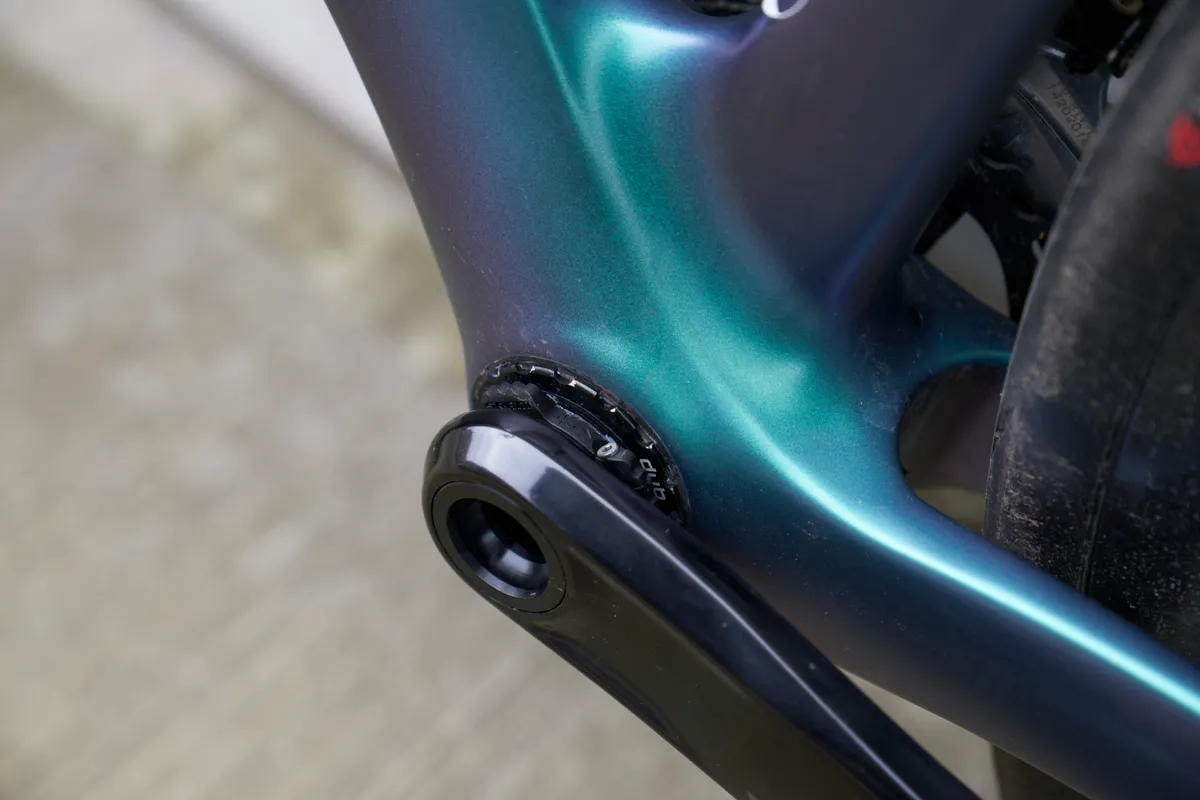The Look 765 Optimum has accompanied Oscar on a year of punishing audaxes and all-day adventures. Here, BikeRadar's mile-munching technical writer weighs up the Look's pros and cons and explains why it has altered his perception of endurance bikes.
Look 765 Optimum long-term review conclusion
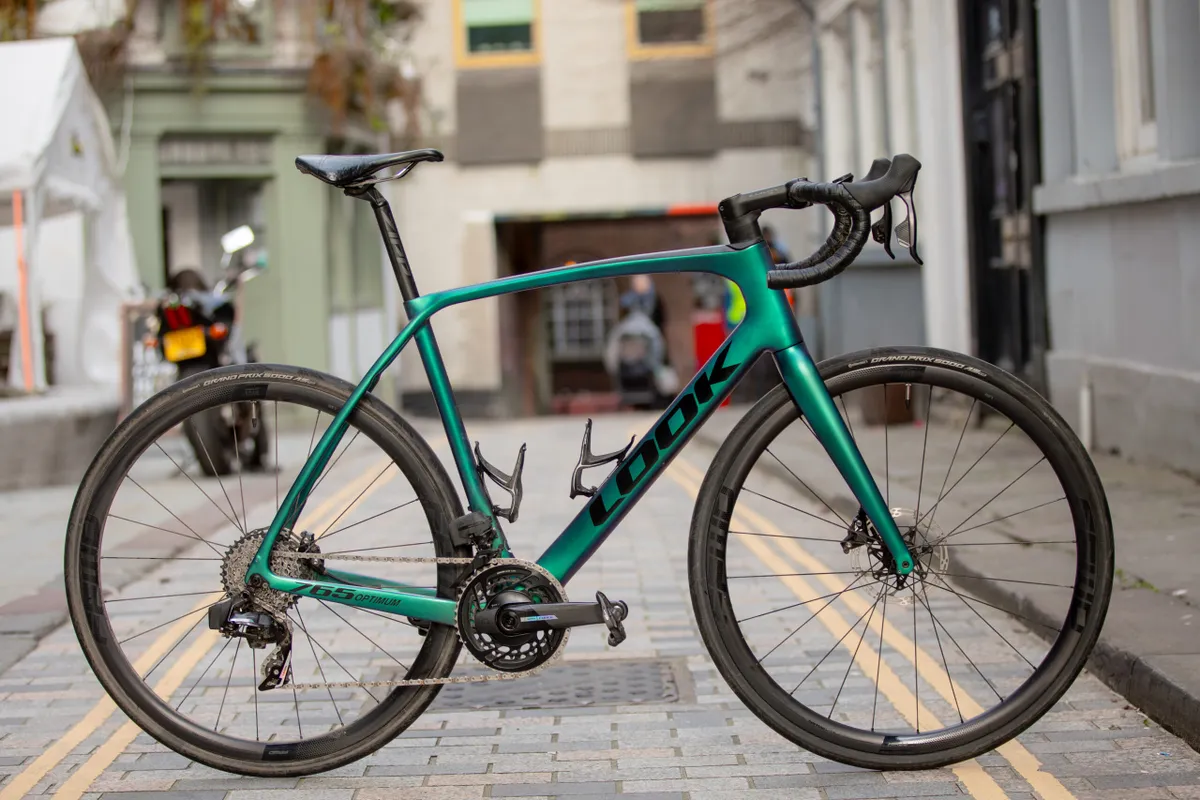
It’s been a little over a year since Look’s 765 Optimum arrived for testing and, sadly, that means it’s time to wrap up this long-term review and deliver my final conclusions.
My overall experience with the 765 Optimum has been very positive. I’ve appreciated the bike’s compliance on many of the long training rides and audaxes I’ve completed throughout the test period.
It got me through the 420km Paddington Express, my longest ride to date, and I managed to complete the ridiculously hilly 300km Dragon Devil Epic with the best part of 4,000m elevation. This was despite facing some low moments, particularly in the latter ride, when my leg decided to spontaneously combust for around 20 miles at the 100-mile mark.
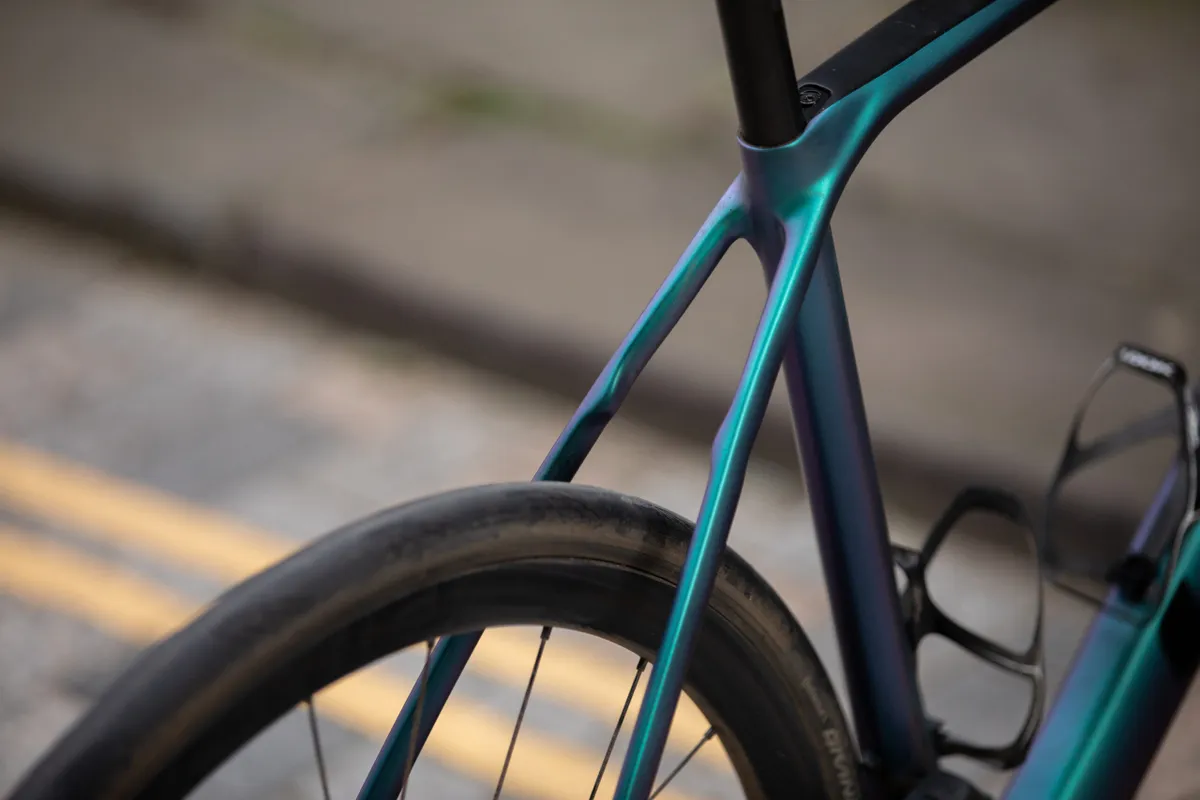
Wider tyres are the key ingredient for the most notable difference in ride quality and the Look ticks all the boxes with its 34mm tyre clearance. I’ve been running 32mm-wide tyres for much of the test period and it feels strange changing back to a bike with 28mm rubber.
As mentioned in my original review, the 765 Optimum has been my first long-term experience of an endurance bike. Most road bikes I have owned and ridden have been climbing or race-oriented options.
I’ve come to have a deeper appreciation for the genre and I’ve certainly felt more comfortable on my longer rides.
In fact, I rode the 320km Moonrakers and Sunseekers overnight audax two years in a row and I managed a faster time aboard the Look in sub-zero wintry conditions than I did the previous year on my dearly departed Specialized Allez DSW SL in unseasonably mild weather.
That’s not to say race bikes don’t have their place. I really admire their razor-sharp handling and their more energetic quality when climbing, and I’m confident many of my road rides will continue to be on this genre of road bike.
Look 765 Optimum highs
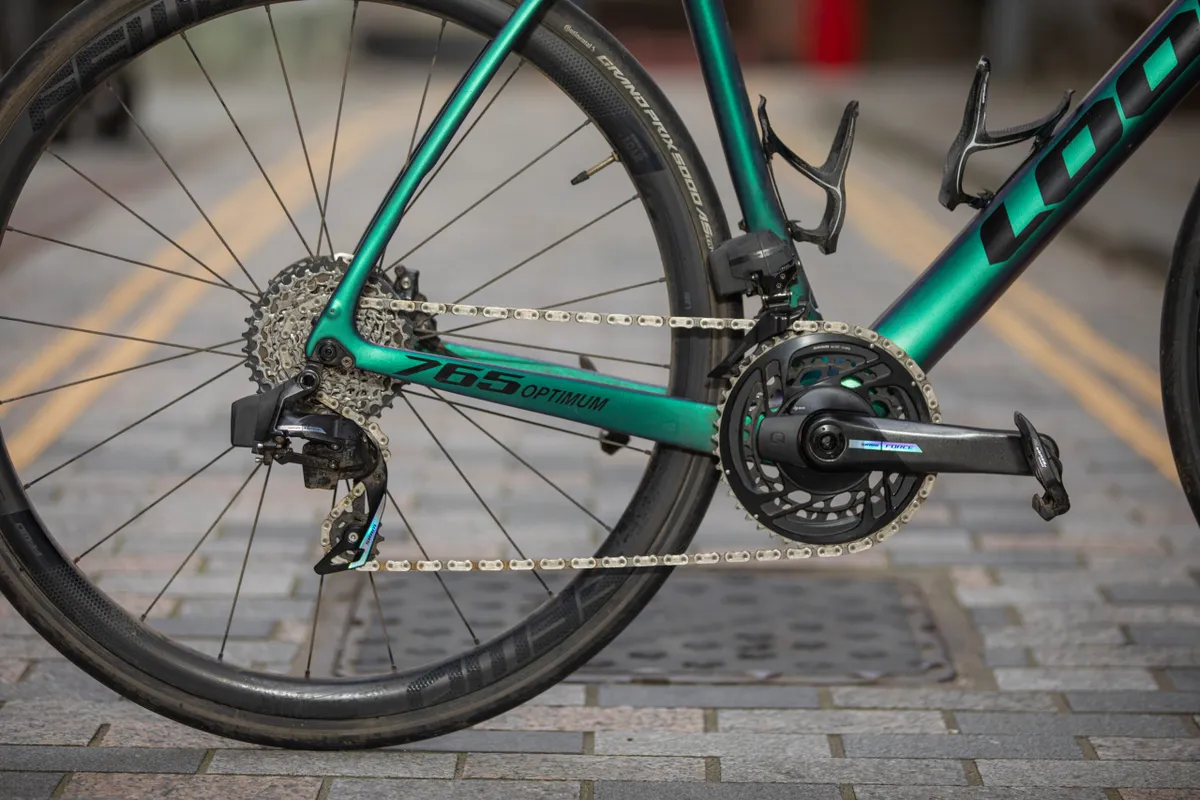
The Look 765 Optimum frameset is fantastic, hitting all the right endurance notes, with a reassuringly stable ride feel paired with a low-enough position so you don’t feel like you’re riding a bus.
I like the bike’s aesthetics, which stand out from the rest of the crowd. Look has always been a brand that isn’t afraid to go against the grain, and the reliance on frame flex with the infusion of glass fibre over pivots or suspension is commendable in how the bike delivers its compliance.
In its stock form though, this build has benefitted from upgrading most components to really unlock the bike’s potential.
However, I don’t think this is necessarily a negative because the frameset is always the most important factor when it comes to a bike’s ride quality. The fact Look specs the same frameset throughout the four-model range is commendable.
Bearing in mind I replaced most of the groupset (which will have reduced the need for ongoing maintenance), the Look has otherwise been very reliable. Other than replacing the chain and disc brake pads, and bleeding the front brake, I haven’t had to do anything to it other than keep it clean.
Look 765 Optimum lows
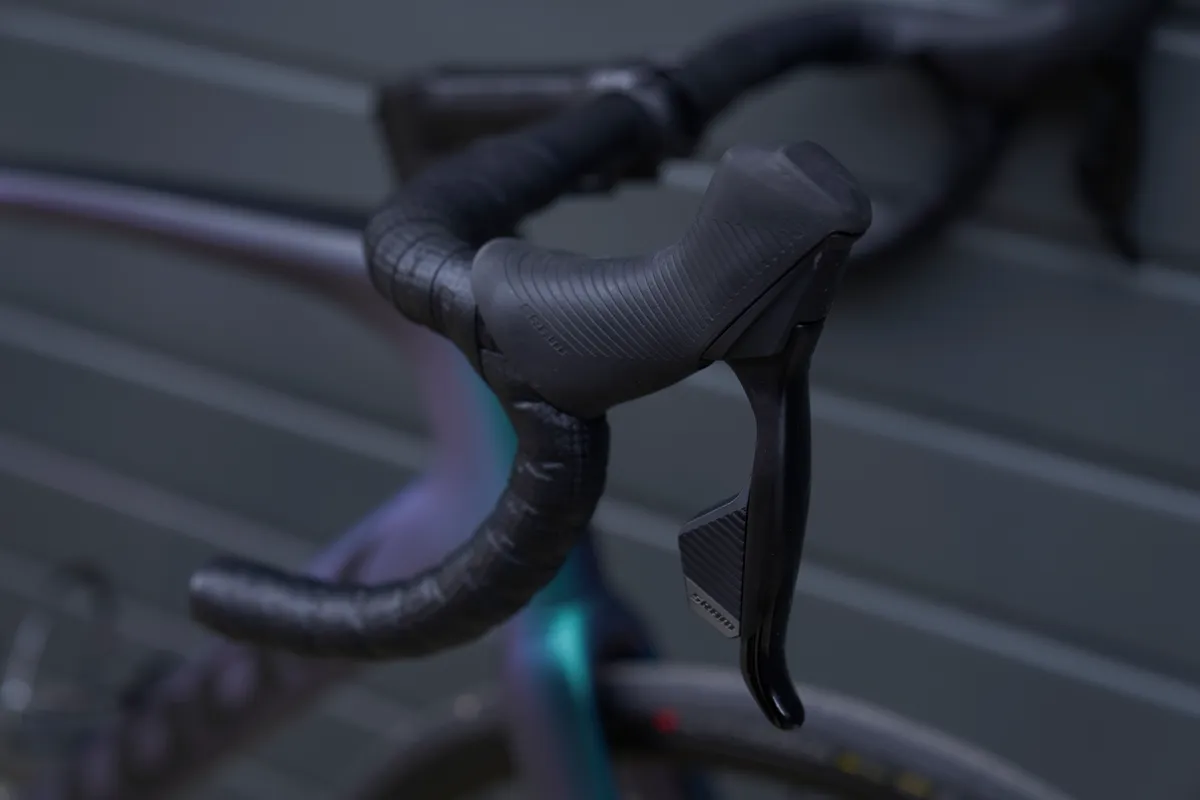
Although I’ve received plenty of stick for this in the comments already, I’m not a fan of the SRAM Rival eTap AXS shifter ergonomics. Their blocky design isn’t especially comfortable and the slight ridge at the base of the hood is an oversight.
The Fulcrum Racing 900 DB OEM wheels that come stock on the bike are heavy and the alloy seatpost is pretty basic – both would be components at the top of my hit list to upgrade if I bought this bike, for the reasons outlined in earlier updates.
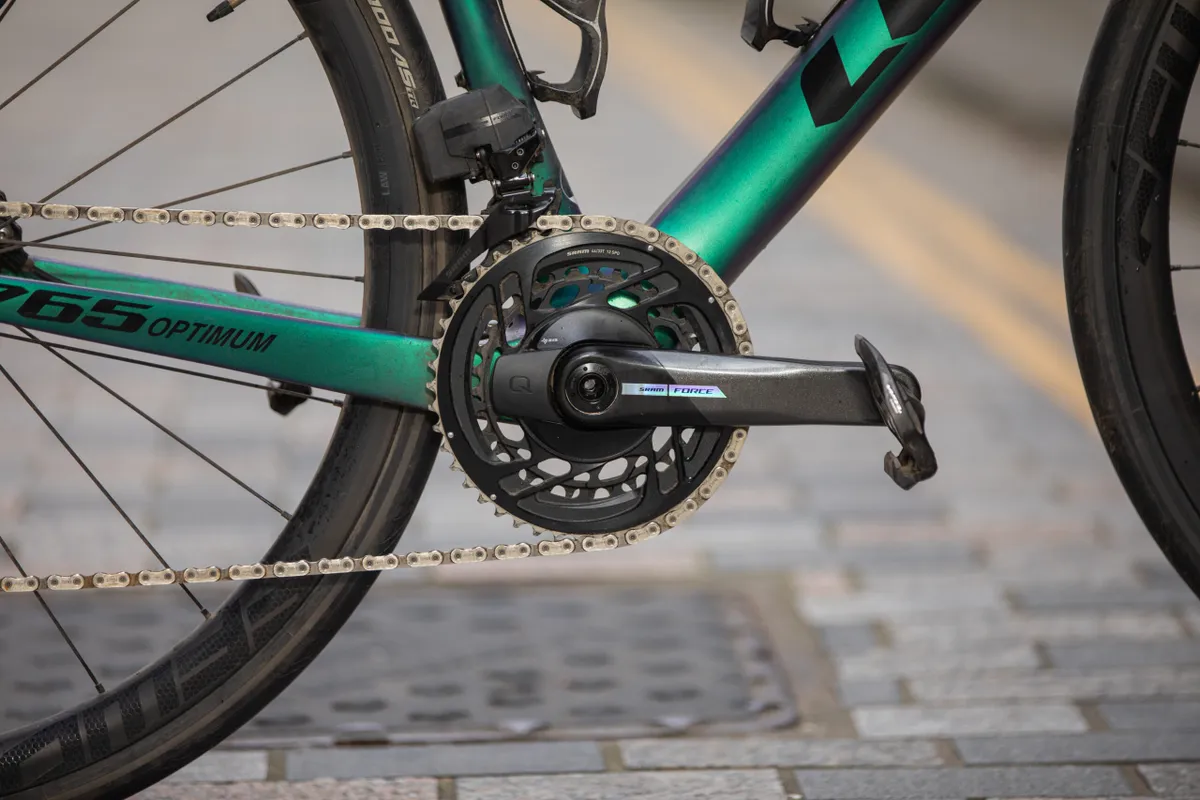
This was a particular problem during my audaxes. Switching back to the Campagnolo Record 12 groupset on my Pinarello GAN K or the Shimano Ultegra Di2 R8070 on my BMC Teammachine SLR01 Disc was revelatory.
It looks as though the upcoming SRAM Red AXS groupset has revised its lever shape. I hope it’s for the better and it eventually trickles down to cheaper road bike groupsets.
There’s really not much else to complain about otherwise.
Look 765 Optimum long-term review verdict
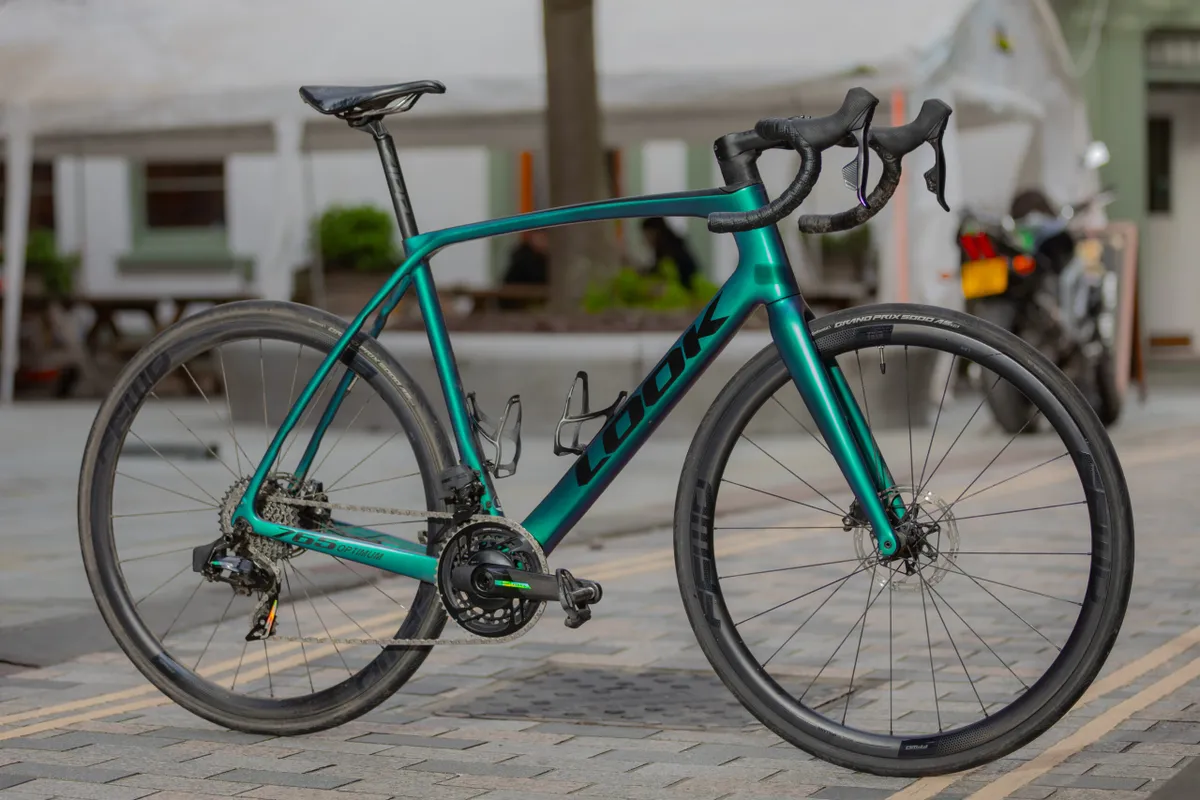
The Look 765 Optimum is a genre-defining endurance bike with a twist. If you’re in the market for an endurance bike, this should be on your shortlist.
Would I buy this bike? I would buy the frameset in a heartbeat, but I wouldn’t buy the SRAM Rival eTap AXS model. As mentioned above, this build doesn’t make the most of the excellent frameset.
If I were going to recommend a complete bike, it would be the Campagnolo Chorus build at £3,990. It’s £1,000 cheaper and I vastly prefer Campagnolo Chorus over Rival for its lever ergonomics. I’d then spend the grand saved on better wheels and tyres.
Otherwise, I’ve really enjoyed my time aboard the Look 765 Optimum – trust me when I say I’ll be sad to see this one go.
Look 765 Optimum in brief
Unlike its rivals, Look’s 765 Optimum doesn’t rely on squishy suspension or gizmos to deliver its comfort, instead focusing on good ol’ frame flex.
The 765 Optimum is an endurance road bike with clearance for 34mm tyres, with the French brand saying the bike is ideal for long-distance riding in comfort. There are mudguard mounts and the beefy tyre clearance means the bike should be capable on rougher surfaces.
Although the geometry is endurance bike in feel, Look hasn’t forgotten its racing roots. It has a slightly longer reach compared to its competition and there are some neat aero touches.
The 765 Optimum I’ll be testing over the next 12 months costs £4,690 / €4,690 / $5,500 and is specced with a SRAM Rival eTap AXS groupset.
The bike is available in five different models, starting at €3,790 for a Shimano Ultegra R8000 build and topping out at £6,290 / $7,300 / €6,290 for a Shimano Ultegra Di2 R8100 groupset and own-branded carbon wheels.
Look has also released a 765 Optimum+ with an even larger clearance for 42mm tyres and geometry that's further relaxed.
Older updates follow…
Look 765 Optimum long-term review update four
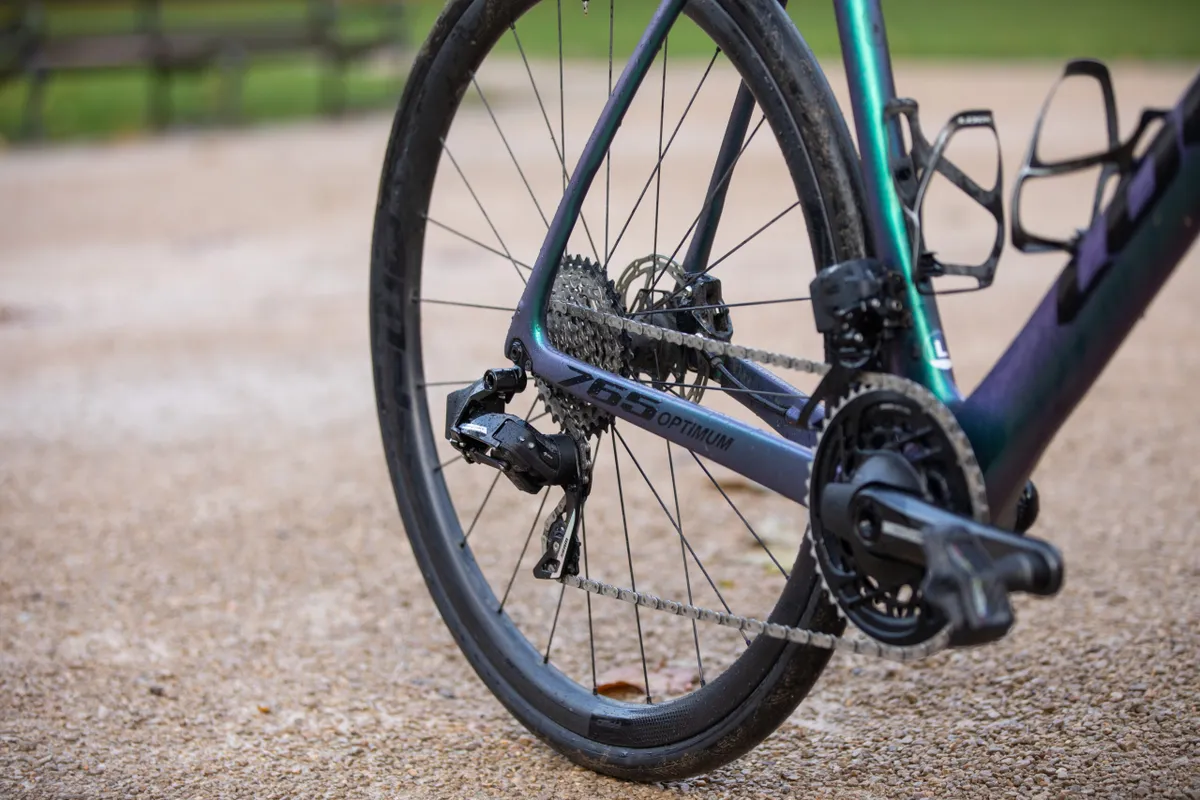
A long-term test enables us to really get to know a bike’s intricacies and comment on its durability. I’m pleased to report the 765 Optimum has, on the whole, been easy to live with.
Before I upgraded to SRAM Force AXS, I only had to replace the chain and change the disc brake pads.
The original Rival chain lasted for just over 2,800km before it showed as 0.5 per cent worn on my chain checker and I replaced it with a Force equivalent. Both of the disc brake pads needed replacing shortly after.
I’ve covered 6,100km on the bike to date and the Force chain seems to be far more durable than Rival. The 0.5 per cent groove of my chain checker isn’t anywhere close to falling in yet. Given it has been subjected to an often cold, and more frequently wet winter, that’s commendable.
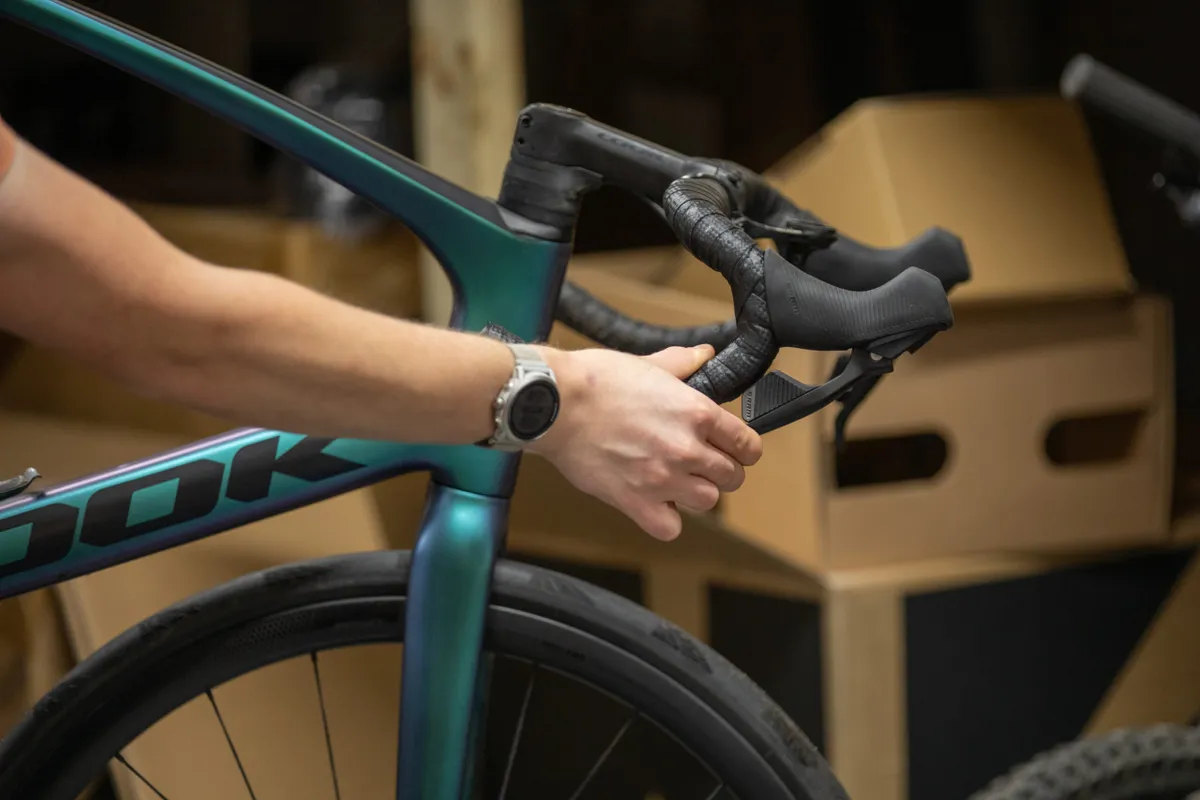
Bleeding the front brake has been the only other maintenance job of note.
A couple of days after riding a cold 220km audax at the start of January, the lever unexpectedly pulled all the way to the bar.
I’ve never experienced this before – perhaps the cold weather could account for the sudden drop in pressure. There were many moments in the audax when I needed to brake heavily, so perhaps that also had a part to play.
Regardless, I bled the SRAM brake and all was well.
Integration investigation
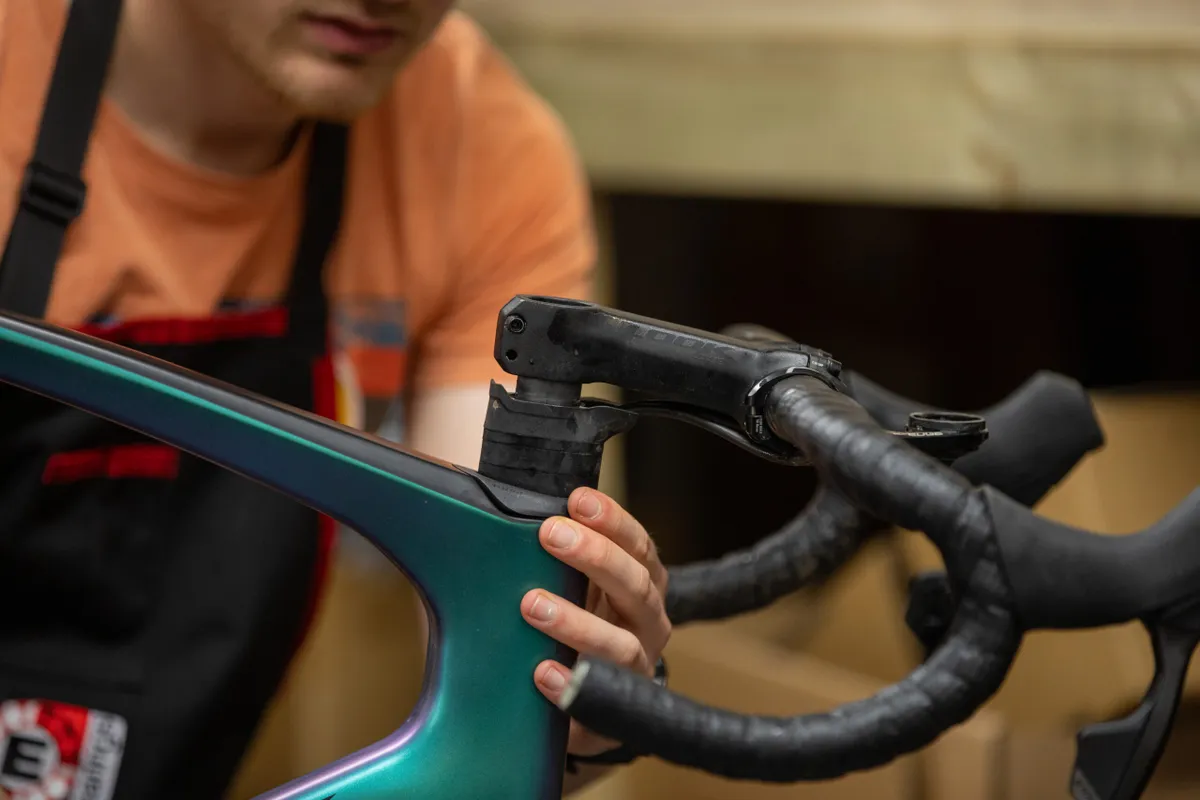
I checked the headset and bottom bracket at the same time. This meant taking a peek inside the integrated front end.
Although the steering felt smooth when turning the bars, I wanted to get under the skin and see exactly what was going on inside.
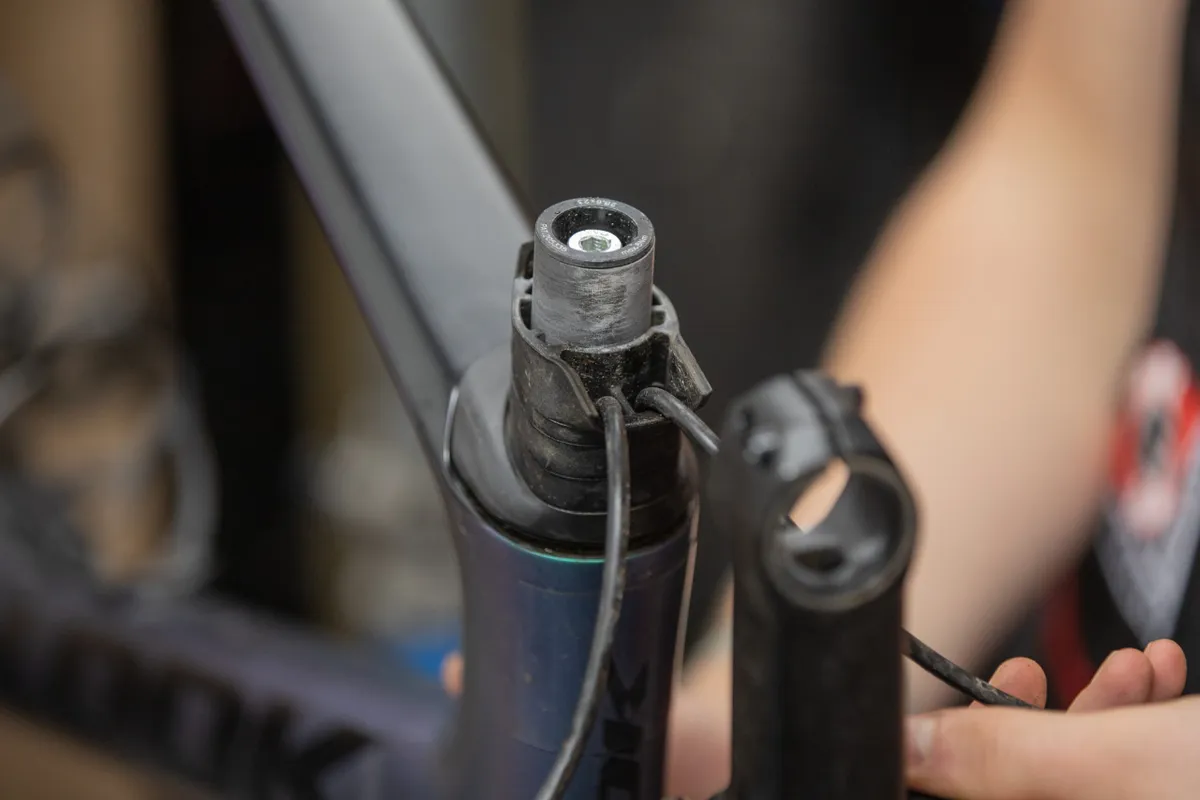
There was some corrosion to the outer races of the bearings, but they crucially didn’t feel notchy.
After wiping them down, I added some fresh grease, which will no doubt see me through to the end of the test period.
The fact the bearings have lasted this long is probably better than average – I came across many headset bearings in integrated systems when I worked in workshops that were toast within less than half the distance.
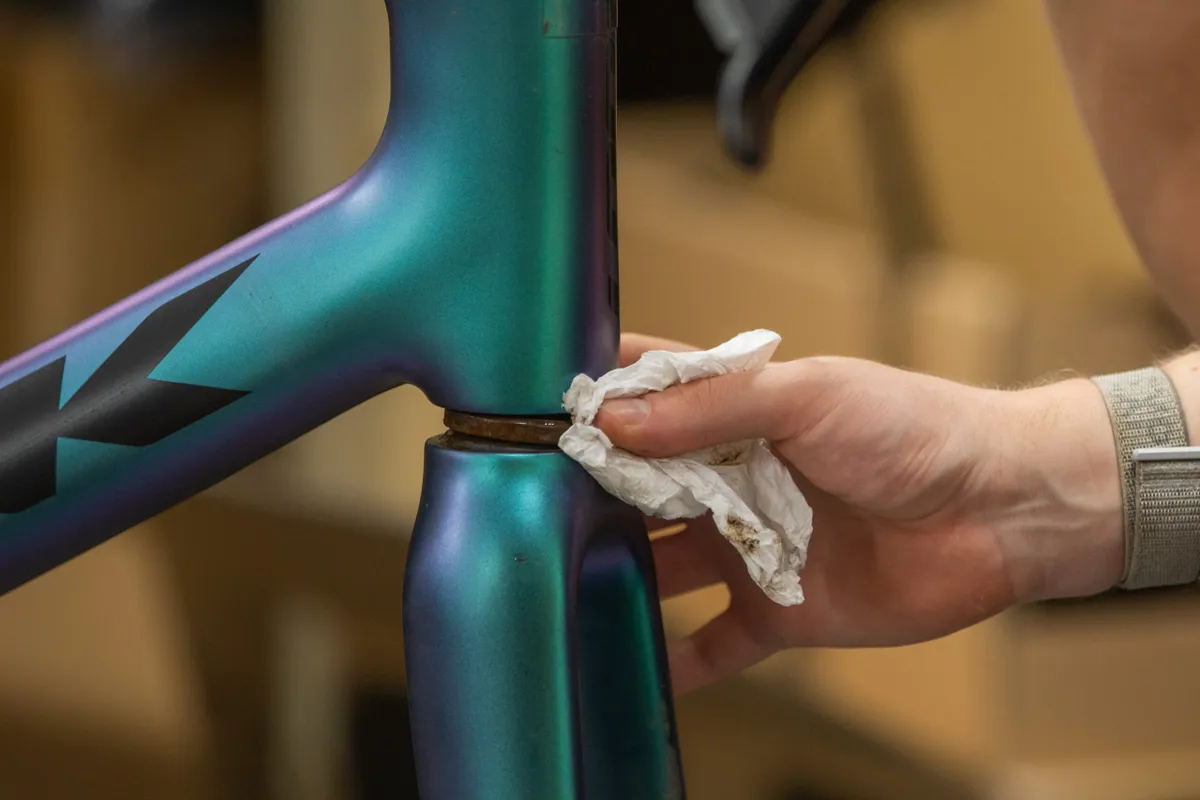
If this were my own bike, I’d probably plan to have another peek in six months' time to monitor their health. Unfortunately, like other integrated bikes, when they do need changing, you’ll need to perform a double brake-bleed.
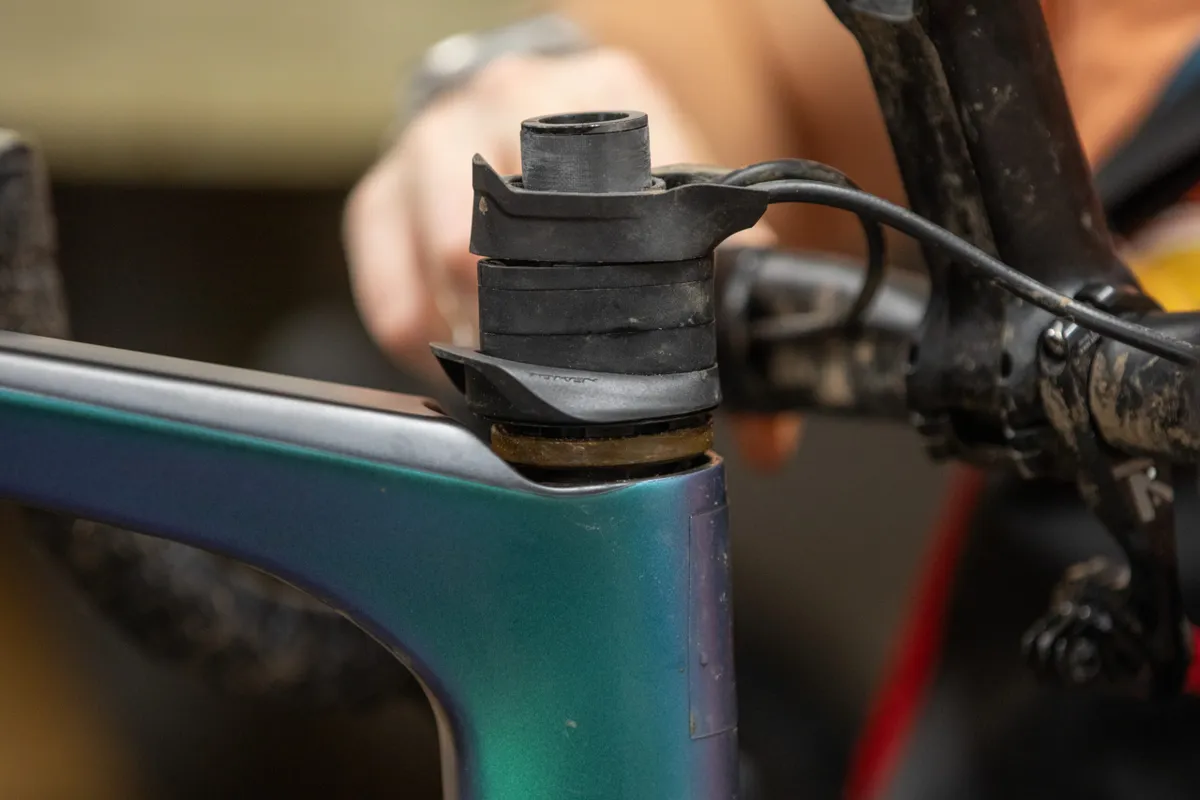
As for the rest of the system, there are jigsaw-style spacers so you can adjust your handlebar height without undoing the hoses and neat channeling so the hoses don’t rub on each other or on the round steerer tube.

While you need to take care to ensure you’re routing each hose through its correct channel (and there’d be two more cables to juggle if you ran a mechanical groupset on this bike), I would ultimately say this is one of the better integrated systems to work on out there.
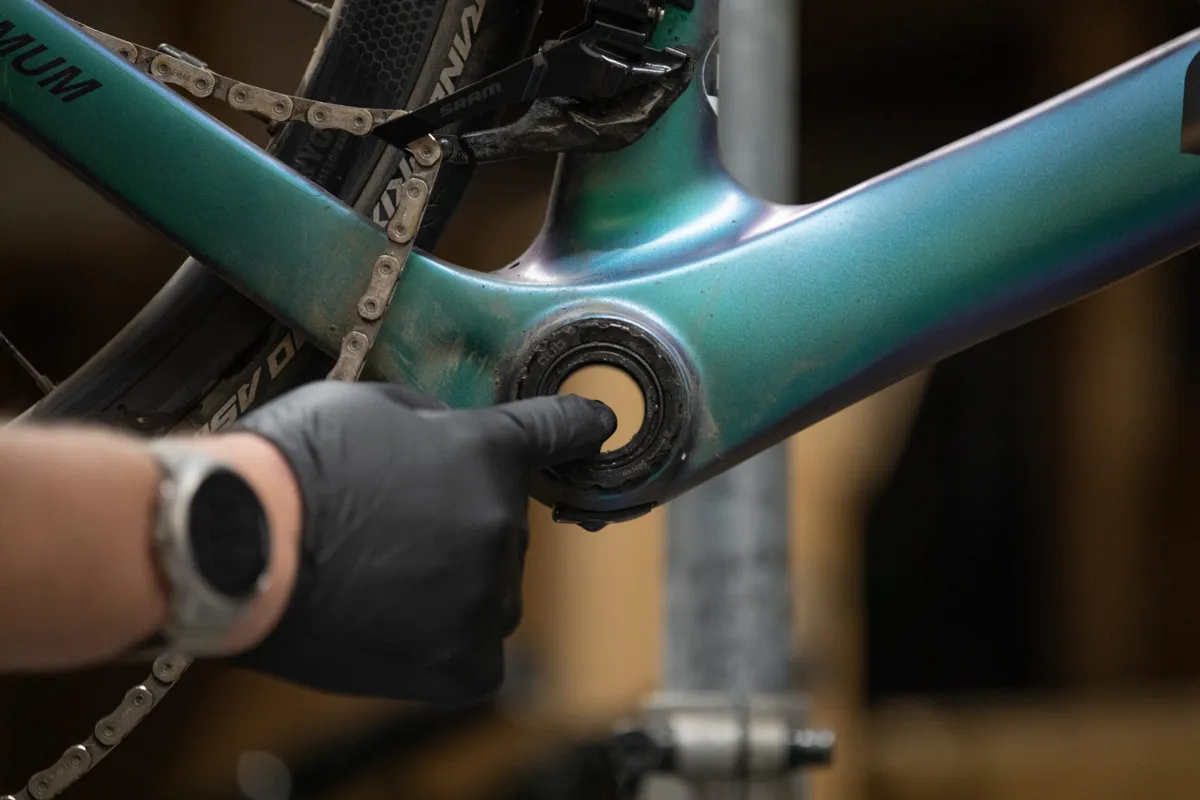
The Token bottom bracket was in better health than the headset and I simply gave it a wipe down and regreased the crank spindle.
Look 765 Optimum long-term review update three
Fast winter rubber
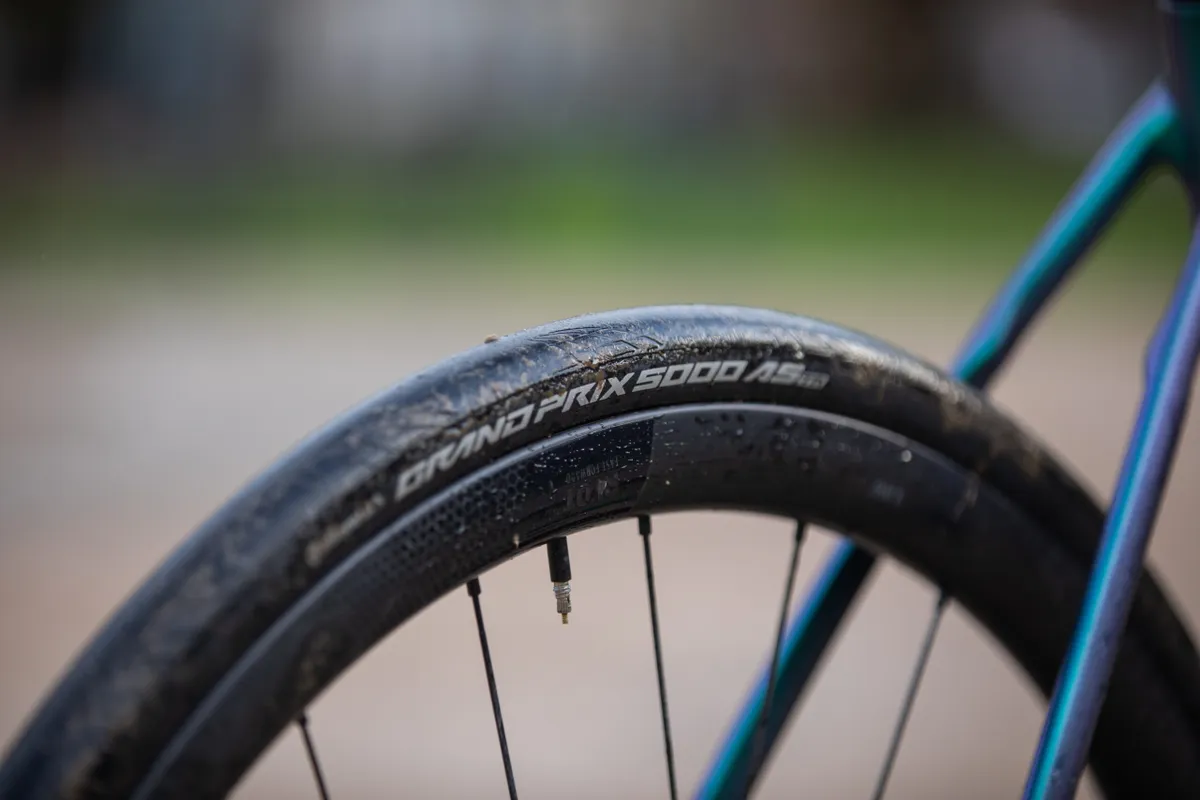
In my last update, I detailed the upgrades I made to the Look’s rolling stock. I clung on to the Continental Grand Prix 5000 S TR tyres for as long as I could, but the wet UK winter has led to a couple of punctures, courtesy of Bristol’s finest detritus. So I’ve now swapped to equivalent 32mm-wide Continental GP5000 AS TR tyres.
These are Continental's new all-season tyres, which promise improved wet-weather grip and better durability.
So I could get as accurate a comparison as possible, I left the Tubolito S-Tubo inner tubes in for the first couple of rides before switching to more sensible butyl tubes for the winter.
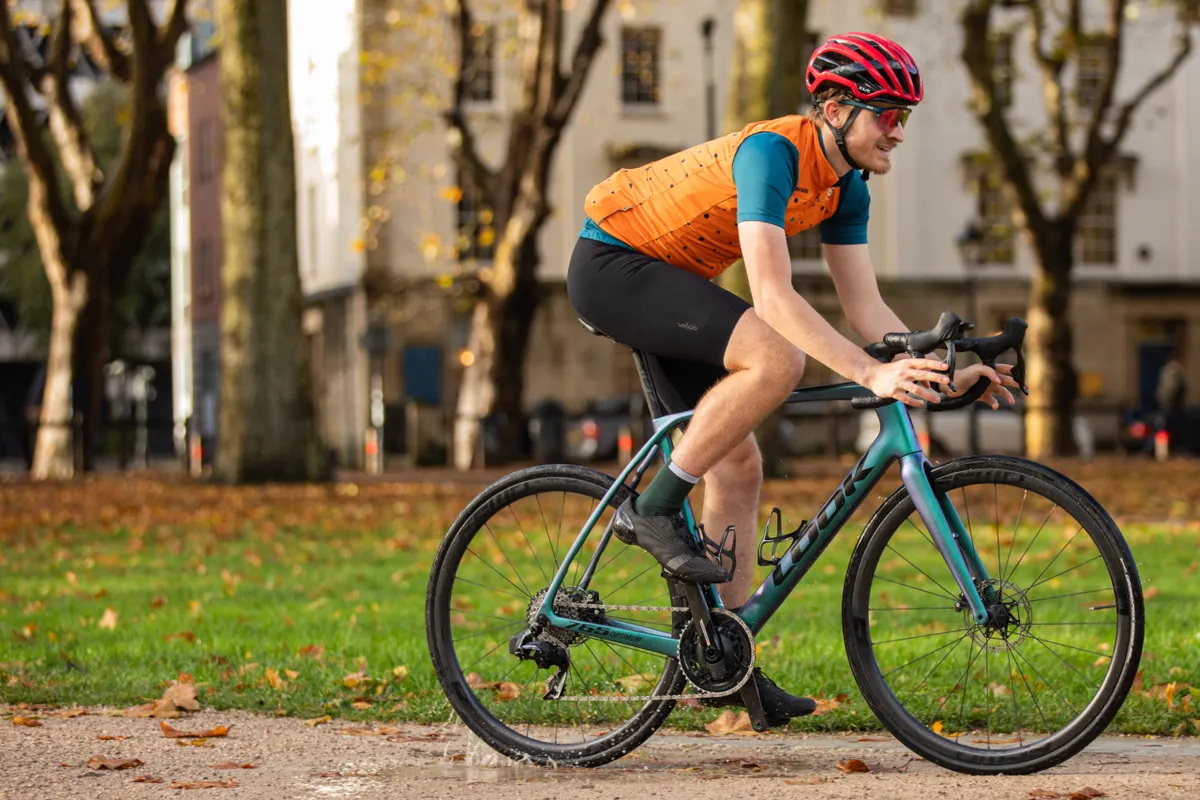
I’ve ridden the tyres for 700km so far and would mostly agree with Ashley Quinlan’s review – they’re fast-rolling for winter rubber and the slightly more wooden feeling over their supple summer counterparts is a trade-off worth making.
I completed 325km of those 700km in one ride, the 2023 edition of the Moonrakers and Sunseekers Audax, an overnight ride from Bristol to Bournemouth and back.
I did the ride last year, but 2023’s edition will forever be seared into my brain. The Arctic temperatures (-4°C on the south coast) froze the water in my bottles for the majority of the ride.
I was particularly appreciative of the Continental tyres' tenacious grip on some of the frozen roads and not once did I feel as if they were going to wander.
They’ve also impressed me on other rides, and I particularly appreciate their glue-like grip on the road in the wet.
Feeling the Force
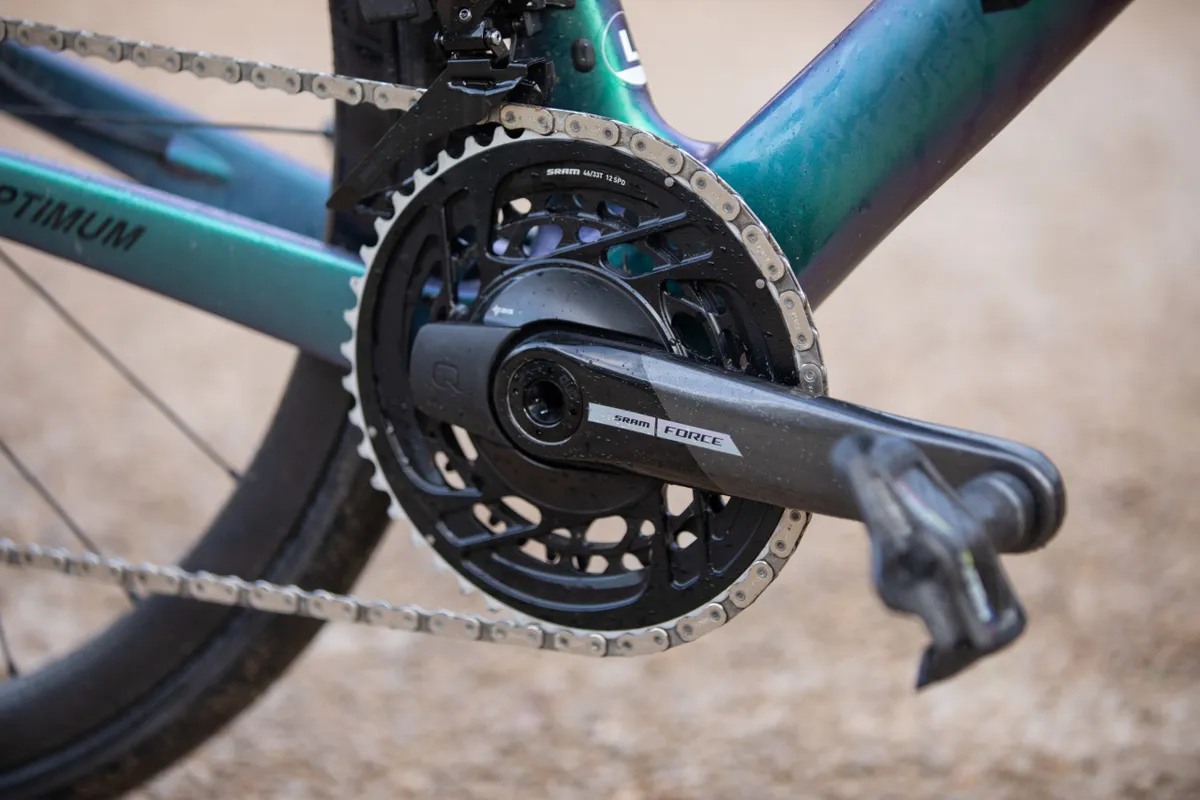
Power meters are arguably at the cutting edge of cycling tech, yet I’ve never owned one. What better way to right that wrong than by testing one out on a long-term bike and lowering the weight of my bike at the same time?
SRAM kindly sent me a power meter crankset from its latest Force AXS range, as well as new matching derailleurs, chain and cassette.
The power meter crankset makes for a substantial weight saving, dropping more than 100g from the Rival equivalent at 738g (46/33t and 172.5mm crank length).
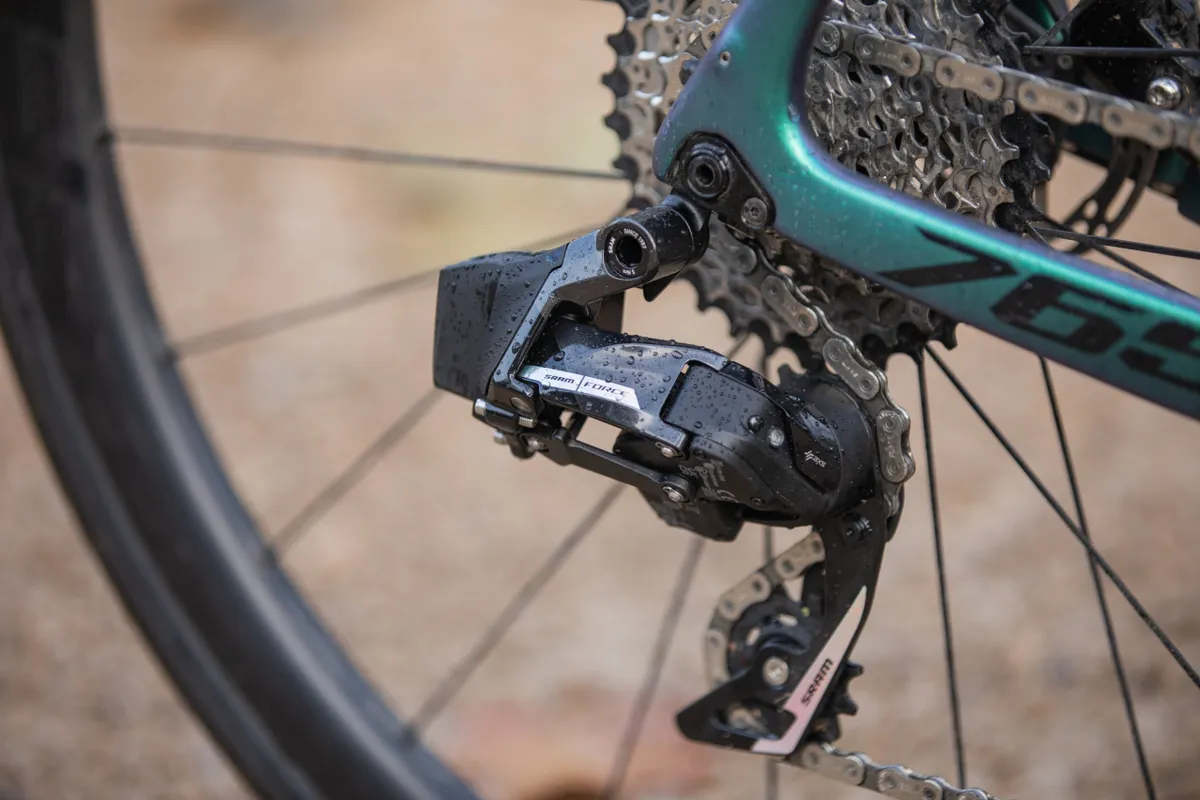
The drivetrain’s weight savings elsewhere are fairly negligible (the Force front derailleur is 1g lighter than Rival’s and the rear drops 26g).
However, weight isn’t everything when it comes to drivetrains (a lighter wheelset, for example, will have a greater bearing on ride quality because it’s rotating weight). The Force AXS rear derailleur uses an Orbit Fluid damper for chain damping over the spring clutch found on Rival, which should improve performance.
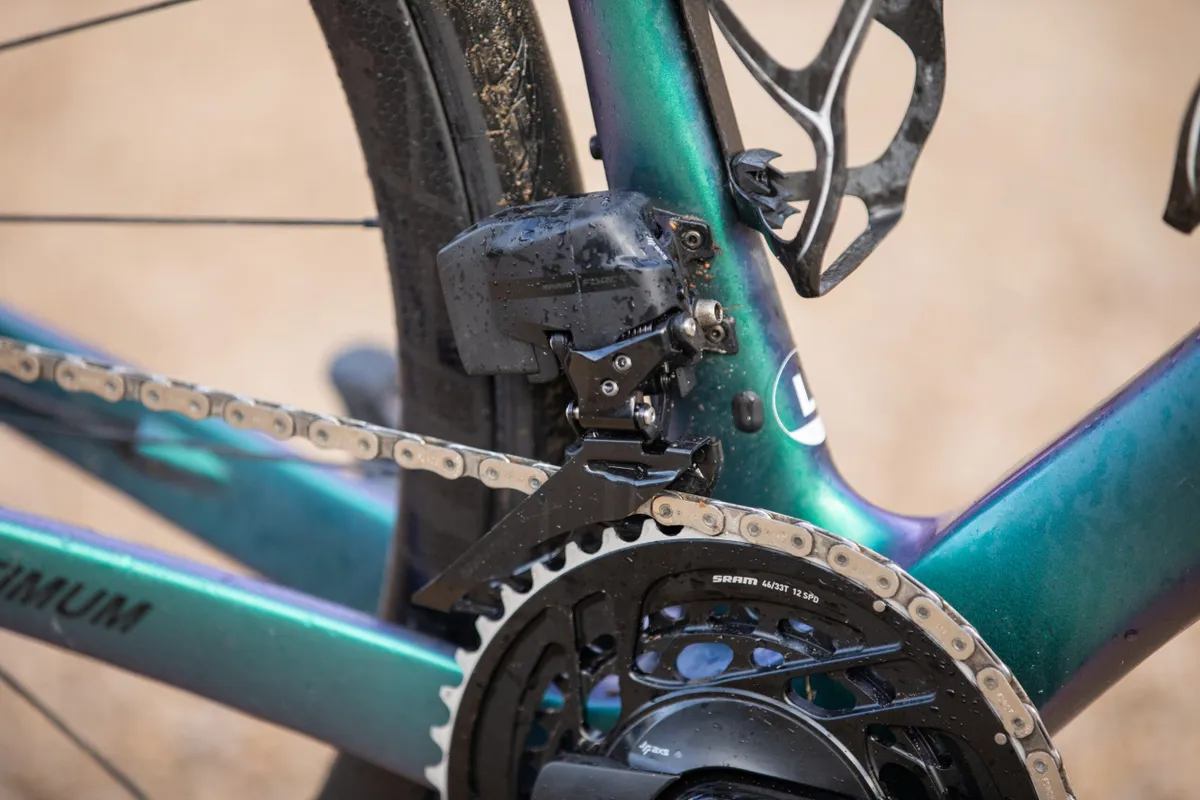
SRAM has also worked on improving the front derailleur shifting quality, firstly by making subtle changes to the cage’s profile.
Taking cues from its top-tier Red eTap AXS, SRAM integrates its double-sided power meter into the chainrings with Force AXS, which it claims also improves shifting. That does, however, mean you’ll need to replace the power meter when the chainrings eventually wear out.
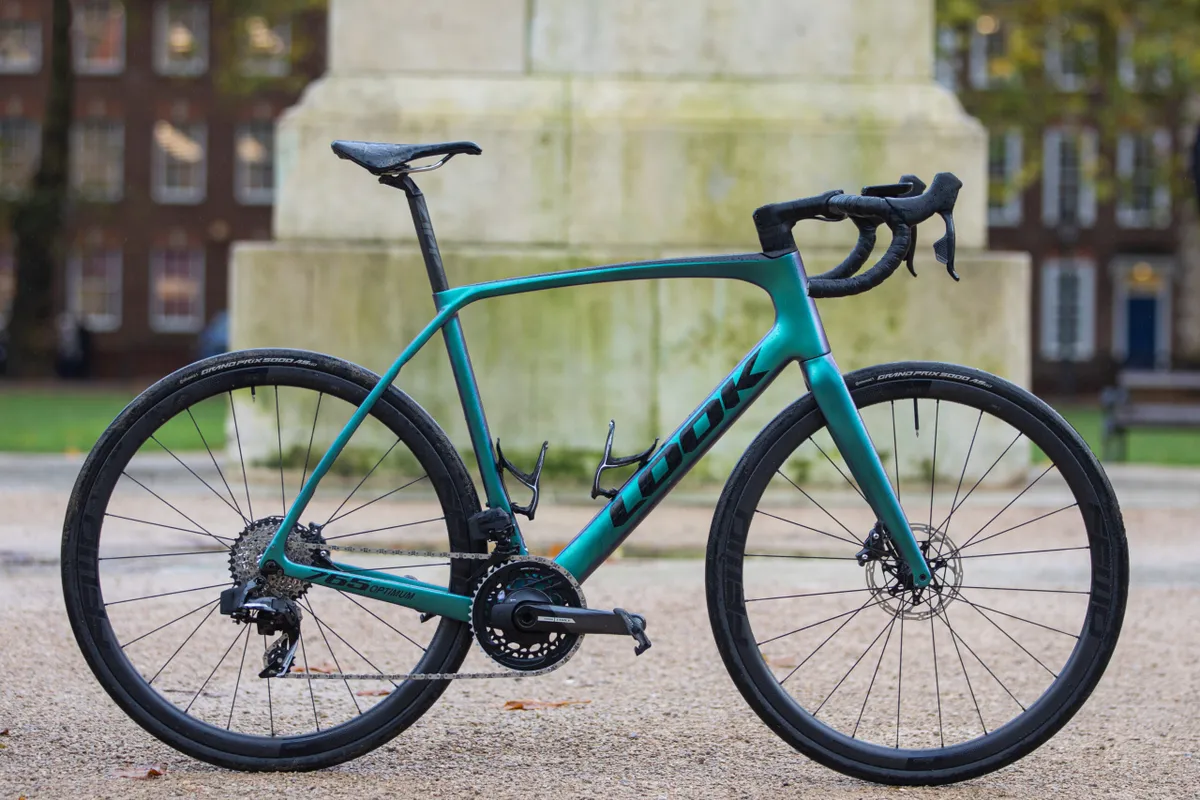
I’ve only got a handful of rides in since fitting the parts but, so far, the shifting is markedly more tactile than Rival, both front and rear. The front shifting was one of my chief criticisms of Rival originally (along with the hood shape) and I’d say SRAM has delivered on its goal.
I still don’t think the front shifting is quite as seamless as Campagnolo or Shimano electronic groupsets though. The chain and cassette seem to better mesh together than their Rival counterparts too.
I also much prefer Force AXS’ Unicorn Grey with Laser Foil graphics over the industrial aesthetic of Rival and the outgoing Force eTap AXS.
Look 765 Optimum long-term review update two
New wheel day
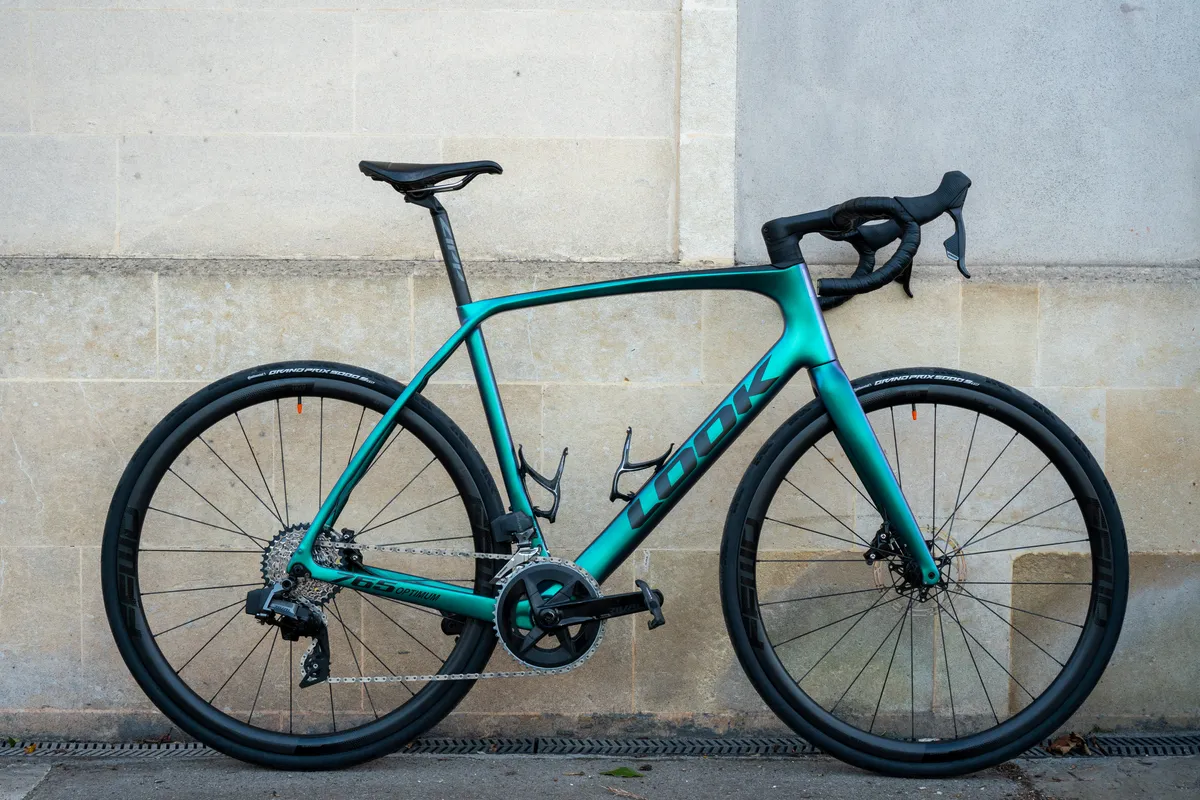
In my last update, I ditched the portly stock Fulcrum Racing 900 DB wheels for the 1,410g Hunt Alloy SLs. These improved the bike’s acceleration, particularly when ascending.
I’ve since changed to a set of FFWD RYOT 33s, a 33mm deep carbon wheelset with a 21mm internal rim width. Although they’re a little heavier than the Alloy SLs at 1,520g, I’m willing to accept the slight penalty for an aerodynamic improvement, while maintaining comfort.
I installed a pair of 28mm-wide Pirelli P-Zero Race tyres while I was waiting for a pair of 32mm-wide Continental Grand Prix GP5000 S TR tyres to arrive.
I upgraded the standard butyl rubber to Tubulito S-Tubo tubes. Despite their punchy price (£29.99 / $37.90 / €34.95 each), I’m a total convert to TPU inner tubes. They provide noticeably lower rolling resistance, are more compliant and their diminutive size is ideal for carrying a spare.

The Peak District was where the wheel setup was first put to the test. The riding in the Peak District is very different to my usual fare, with far larger climbs.
The highlight of the trip was tackling the Cat and Fiddle. This climbs for 11km up to 520m at a pleasant 3.5 per cent average gradient. The end of the climb is signalled by its namesake pub. Descending through the exposed moorland was exciting, although required concentration due to a gusty sidewind.

Did the wheels make a noticeable difference to the Look’s ride quality? Stay tuned for a full review of the FFWD RYOT 33’s soon.
Slaying the dragon

I also tackled the Dragon Devil ride in June – a gruelling 296km sportive in South Wales with 4,600m of climbing.
It was hard to settle into an initial group due to an erratic pace, with riders either surging or slowing. The group dwindled down after 60km as we ascended the atmospheric Black Mountain.
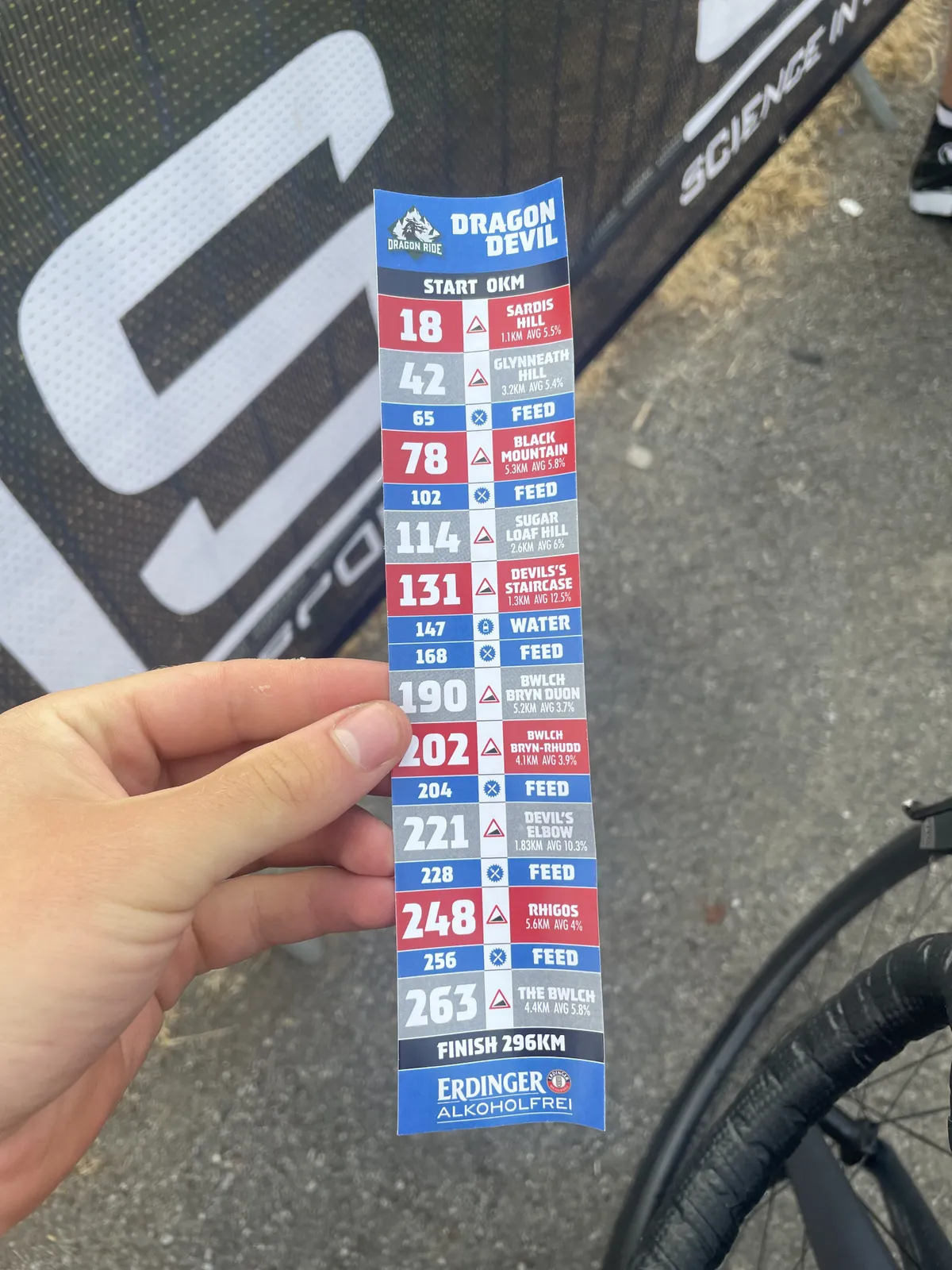
The Devil’s Staircase certainly earned its name. It's a short, 1.8km lung-busting climb on the fringe of the Cambrian mountains with an average 12.5 per cent gradient. You know you’re in for a traumatic ordeal when you see the full extent of the climb from a distance and a caravan struggling to get up. I was very grateful for the Look’s 33t inner chainring and 36t cassette cog, although the wall-like gradient still meant I had to stand out of the saddle.
I contemplated my life choices at the 170km mark as my legs temporarily gave up on me. I had to pull into a lay-by to give myself a stern talking to.

My legs somewhat sputtered back to life 30km later. At the penultimate feed station, a marshal informed us we would be missing the final two climbs due to a medical emergency with a diversion in place.
Although my legs were relieved, it was a shame to miss out on the full distance or elevation.
Still, I felt pretty broken as I dragged my carcass back to the finish twelve hours later. I felt properly ropey the next day.

Was the Look the right bike for the ride? Undoubtedly yes.
I originally mentioned the Look isn’t the most exciting bike to climb on due to its slacker head tube angle. Climbing or race-oriented bikes tend to dance uphill with their more energetic ride quality.
While I still believe this to be the case, I was happy to take the hit on the climbs for the Look’s descending prowess and more comfortable position. And let’s be honest, its climbing characteristics wouldn’t matter too much anyway with all those hills in the legs anyway.
Look 765 Optimum long-term review update one

I’ve been getting to know the Look 765 Optimum more intimately since my initial review and have now clocked up just over 1,000 miles on the endurance road bike.
A large chunk of those miles were completed in one ride, the Paddington Express audax, which is 408km (253 miles) long.
After a surprisingly enjoyable overnight 308km audax last November, I’ve been on the hunt for another challenge to put the Look to the endurance test and this even longer audax seemed like the perfect opportunity.
All aboard the Paddington Express

The Paddington Express audax starts in Bristol and heads to London Paddington station through towns and villages north of the M4 motorway. The audax then heads back to Bristol but takes a southerly route.
With 3,400m of total elevation, it’s relatively flat for the imposing distance.
The audax started at 3pm and runs overnight. It’s been designed this way because it’s a qualifying event for Paris-Brest-Paris – a 1,200km ride held every four years where entrants must complete an approved 200, 300, 400 and 600km audax in the preceding months. This format allows prospective riders to test themselves at riding overnight.
Riding overnight didn’t phase me. The 3pm start was actually preferable to the 10:30pm start of my previous audax, which I found difficult to prepare for in terms of sleep.

Overall, the ride generally went much better than expected. I managed to get into a well-coordinated group after 20km and we averaged 17mph for the first 250km.
That average speed swiftly dropped as my legs started to complain at around 330km. Although I began to struggle, I didn’t bonk, riding the last section on autopilot.
Prior to the event, I swapped the stock wheels and tyres over to my Hunt Alloy SL wheelset. I paired the wheels with Pirelli Cinturato Velo tyres.
The Alloy SL’s weigh 1,410g which is a considerable saving over the stock 1,950g Fulcrum Racing 900 DB’s.

While the Hutchinson Fusion 5 tyres were fine, I wanted something more grippy and faster-rolling for the ride. The Cinturato Velo’s are surprisingly fast-rolling for what is a four-season tyre and I didn’t want to tempt the risk of punctures on the wet roads.
Although the Look was no slow-coach before, the upgraded wheel and tyre combination made a noticeable difference, with the bike having significantly more grunt when ascending.
Past the four hour mark, I was thankful to have fitted my trusty Specialized Power Pro Elaston saddle. I didn’t get on with the stock short-nosed San Marco saddle on rides over four hours, so thought I better play it safe.

I knew my Garmin Edge 830 wouldn’t last the whole ride while navigating, so I also ran a Garmin Charge Power Pack. Impressively, I didn’t need to use it until the 320km mark.
As night fell, I turned on my Exposure Maxx-D Mk13 front light. Although its whopping 4,000-lumen maximum output is overkill for the road, I like to be overpowered so I can run a lower setting to prevent any risk of the battery dying. I ran a second backup Exposure Trace Mk2 front light and a Moon Nebula at the rear.

Finally, the Wizard Works Wiz Viz Lil Presto Barrel bar bag worked perfectly for storing belongings in.
I attribute a lot of the ride’s success to the Look, which was an outstanding performer thanks to its blending of comfort and speed.
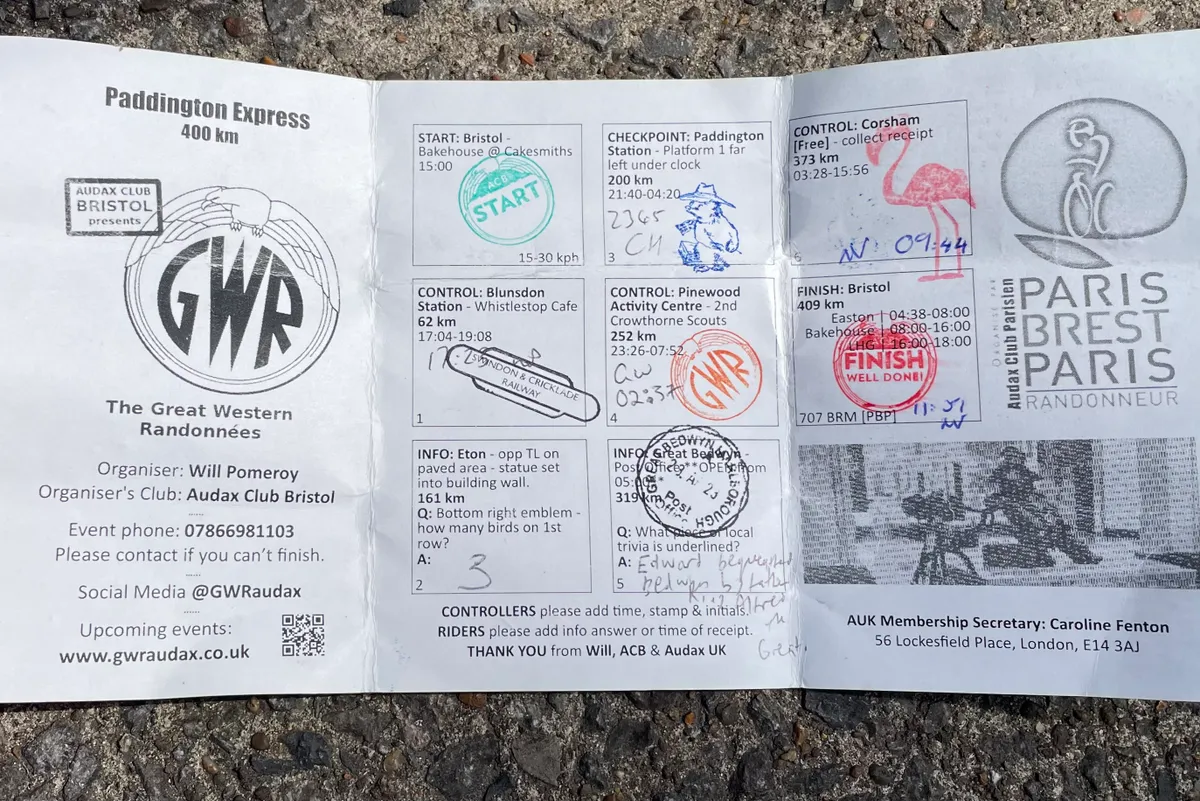
The more upright position and predictable handling suited me. Crucially, I didn’t feel beat up by the frame and it removed lots of the sting from road vibrations.
Although my feelings are still mixed about the SRAM Rival eTap AXS groupset, particularly the shifter ergonomics, I appreciate the wide-ranging 10-36t cassette paired with the 46/33 chainrings. This gearing got me up the steep climbs towards the end of the route.
Look 765 Optimum specification and details
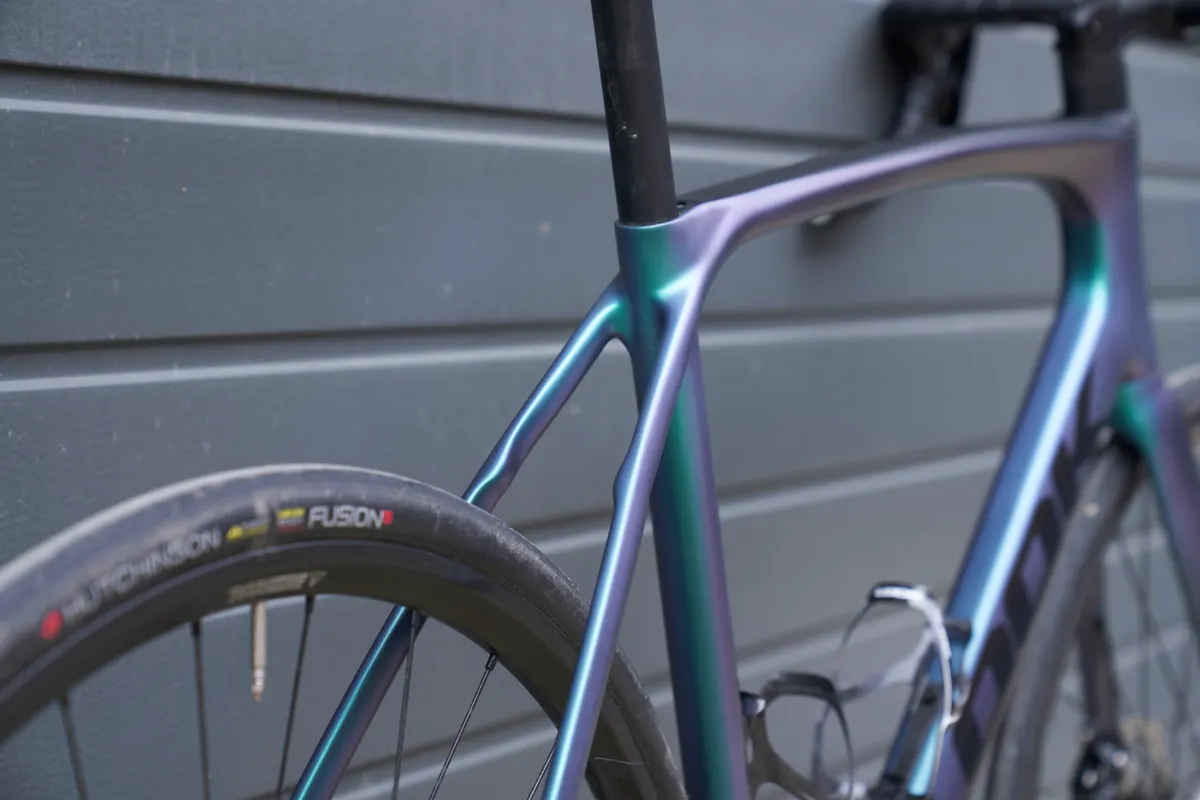
Manufactured in Taiwan, Look says the 765 Optimum has an ‘endurance-specific’ carbon layup.
The seatstays and chainstays are flattened and the seatstays also kink inwards as they clear the top of the rear tyre. Look says this is to increase compliance.
The flexibility of the seat tube (and, by extension, seatpost) is a key determinant of rear-end comfort. To this end, the seat tube is nice and thin.
There are recessed mudguard mounts on both the fork and stays. These are only compatible with Look’s own mudguards, due to be available from May.
Like most current high-end road bikes, the front end is integrated. Because this model uses a wireless electronic groupset, there are just the two hydraulic hoses to route.
The round steerer tube means you can run a conventional stem if you prefer. A neat headset compression sleeve performs double-duty, securing any cables and hoses, meaning they shouldn’t rub on the steerer tube.
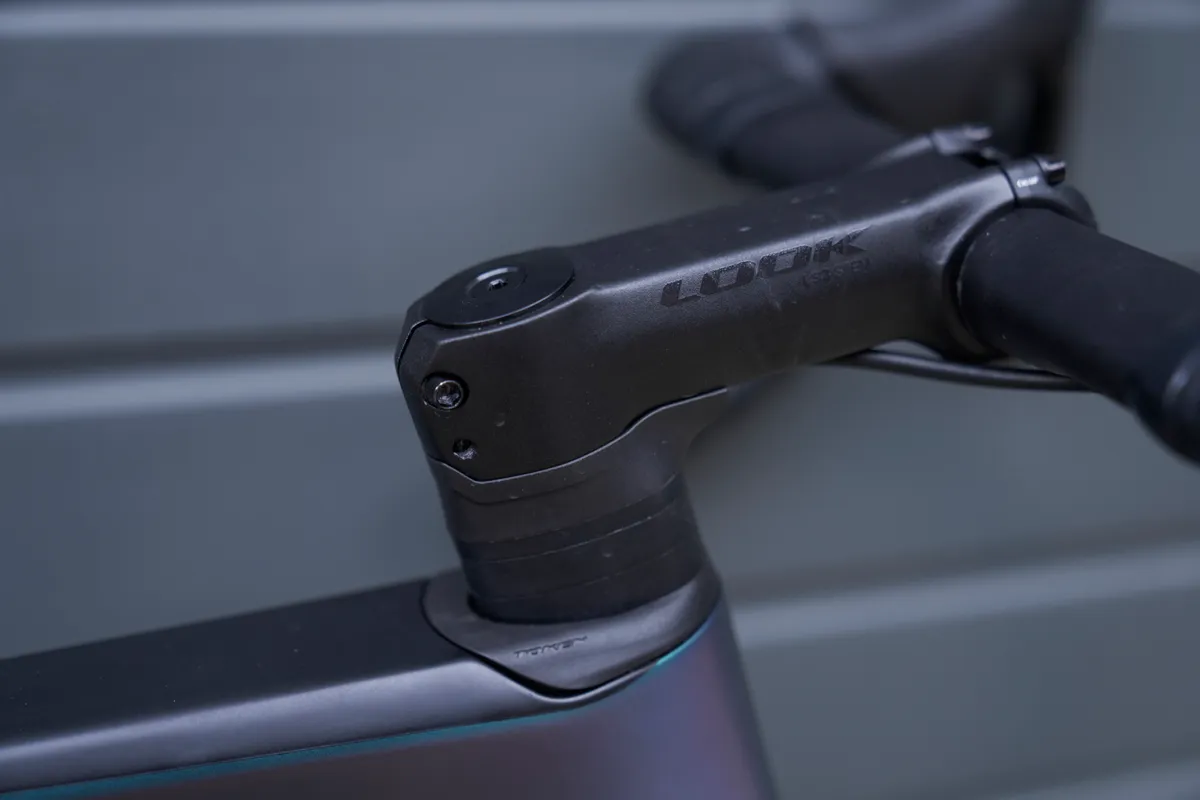
To my delight, Look specs a 27.2mm round seatpost – this means you’re not locked into a proprietary post and there’s plenty of choice if you want to add some more squish.
This particular model sees a SRAM Rival eTap AXS groupset specced, which is par for the course, with 46/33 chainrings and a 10-36t cassette.
You get Fulcrum’s Racing 900 DB OEM wheels with 30mm-wide Hutchinson Fusion 5 tyres.
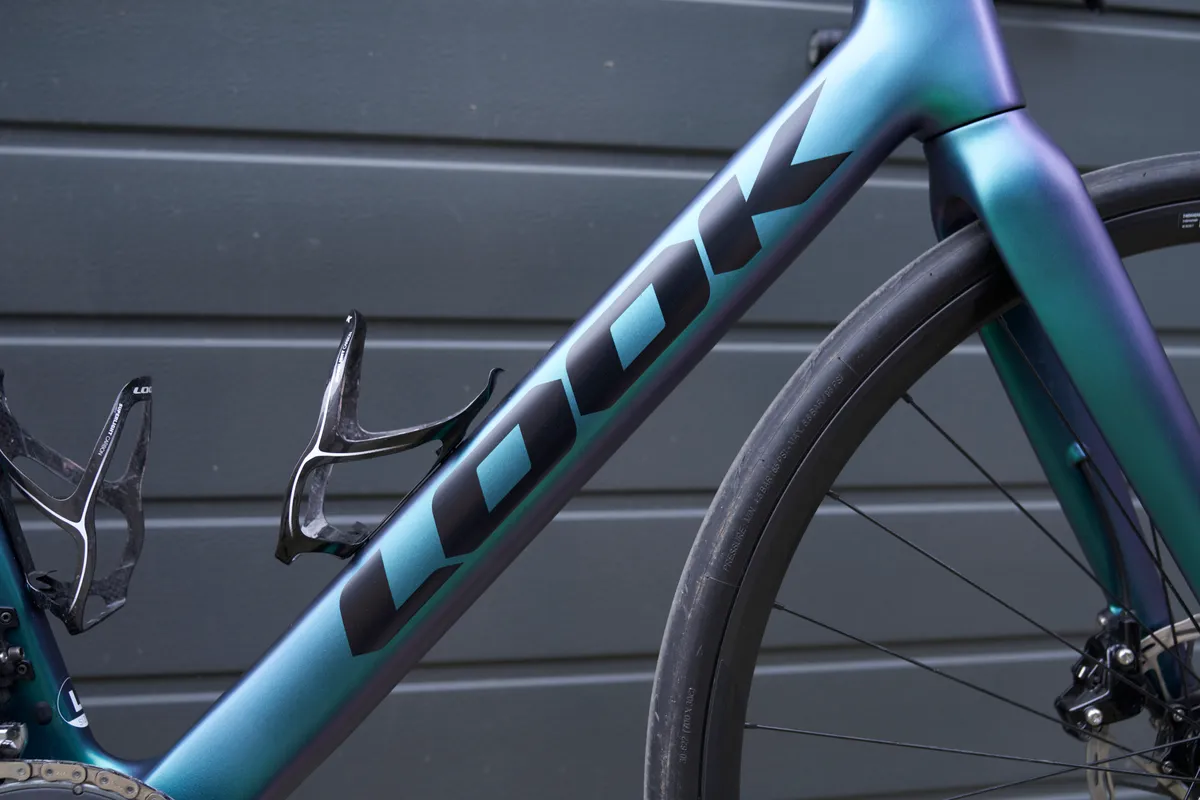
The finishing kit is all own-branded and aluminium, with the exception of the Look-branded San Marco ShortFit saddle.
This paintjob is called Chameleon Green Blue. It’s luxurious when seen in person – subdued on a downcast day, but the flip colour really pops in the sun.
Look 765 Optimum full specification
- Sizes (*tested): XS, S, M, L*, XL
- Weight: 8.79kg (without pedals)
- Frame: Look 765 Optimum
- Fork: Look 765 Optimum
- Shifters: SRAM Rival eTap AXS
- Derailleurs: SRAM Rival eTap AXS
- Crankset: SRAM Rival eTap AXS, DUB, 46/33
- Wheelset: Fulcrum Racing 900 DB
- Tyres: Hutchinson Fusion 5, tubeless-ready, 700c x 30mm
- Brakes: SRAM Rival, 160 rotor front, 140 rear
- Handlebar: Look LS2 Alloy (XS-S 40cm, M-L 42cm, XL 44cm)
- Stem: Look LS3 Alloy (XS 80mm, S 90mm, M-L 110cm, XL 120cm)
- Seatpost: Look LS3 Alloy, 27.2mm, 350mm
- Saddle: San Marco ShortFit
Look 765 Optimum geometry
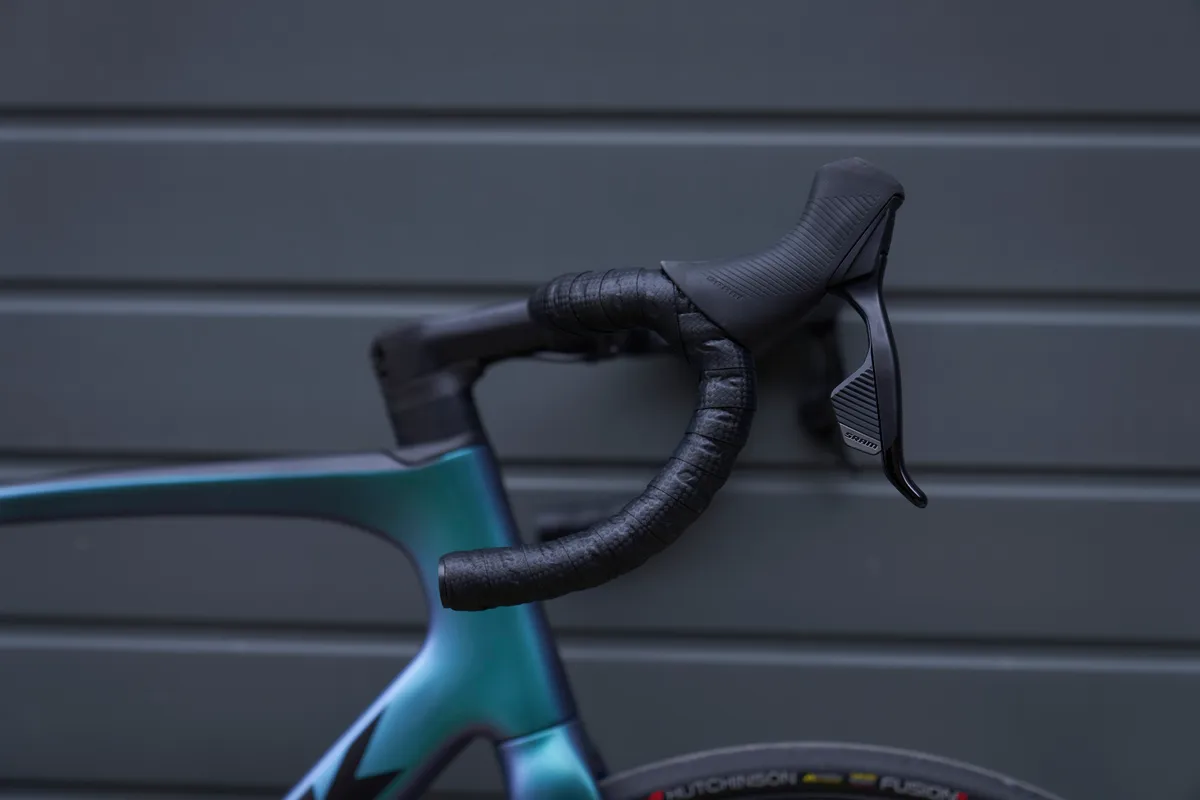
The 765 Optimum’s geometry is really interesting. Look closely at the numbers and you’ll notice it bucks convention in certain areas, striking a fine line that balances endurance bike convention with a longer reach and exciting handling.
Most notable is the seriously slack 70.8-degree head tube angle. This is significantly slacker than other brands’ endurance bike efforts, with the Cannondale Synapse clocking in at 73.2 degrees and the Trek Domane SLR at 71.9 degrees.
Look says it has opted for this slacker angle to “ensure stability on rough roads or when riding with a handlebar bag”.
The reach is slightly longer too at 389mm in this size large. The Domane is shorter at 377mm and the Synapse at 367mm.
The stack is particularly generous at 606mm to keep you more upright, with the chainstay length a rather middle-of-the-road 415mm on all sizes.
The seat tube angle is relatively steep at 74 degrees and the horizontal top tube length is 562.4mm.
The seat tube length is 535mm, which is much taller than other endurance bikes and will mean there is less seatpost exposed.
Look specs a longer 110mm stem on a size large. You’d typically expect to see a 100mm stem on a L frame, with a longer stem putting you in a slightly more aggressive position, as well as slowing the steering.
I opted for a size large for my 5ft 11in height.
| | XS | S | M | L | XL |
|---|---|---|---|---|---|
| Head tube angle (degrees) | 70.8 | 70.8 | 70.8 | 70.8 | 70.8 |
| Seat tube angle (degrees) | 74 | 74 | 74 | 74 | 74 |
| Top tube horizontal length (mm) | 511.8 | 528.7 | 545.5 | 562.4 | 579.3 |
| Seat tube length (mm) | 470 | 490 | 510 | 535 | 560 |
| Chainstay length (mm) | 415 | 415 | 415 | 415 | 415 |
| Reach (mm) | 359 | 369 | 379 | 389 | 399 |
| Stack (mm) | 534 | 558 | 582 | 606 | 630 |
Why did I choose this bike?
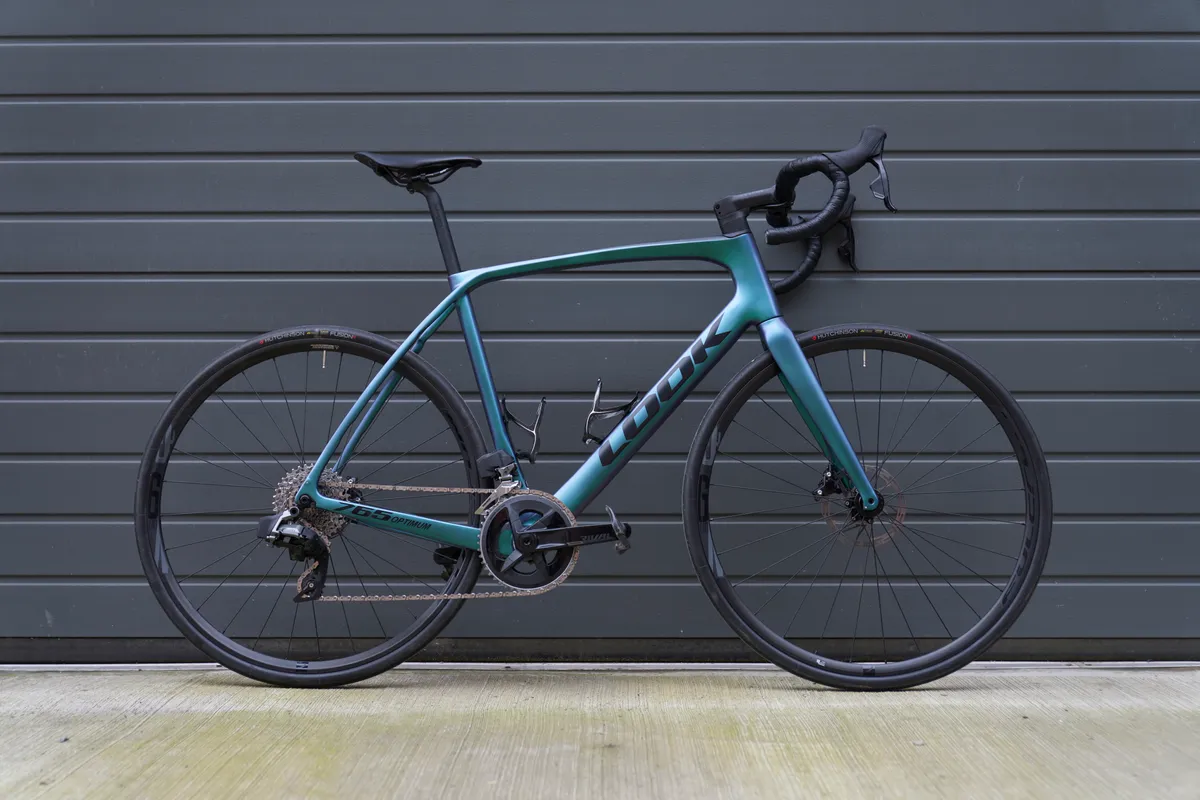
The majority of the road bikes I have owned and ridden to date have been lightweight, race-oriented options.
One of my aims for this year is to ride more audaxes and longer-distance gravel bikepacking trips.
I’ve set myself the ambitious challenge of completing at least one 100-mile ride a month. The aim is to get acclimatised to riding this distance regularly, which should hopefully pay off in the long run.
I’d like to complete these rides in comfort, hence my interest in an endurance bike.
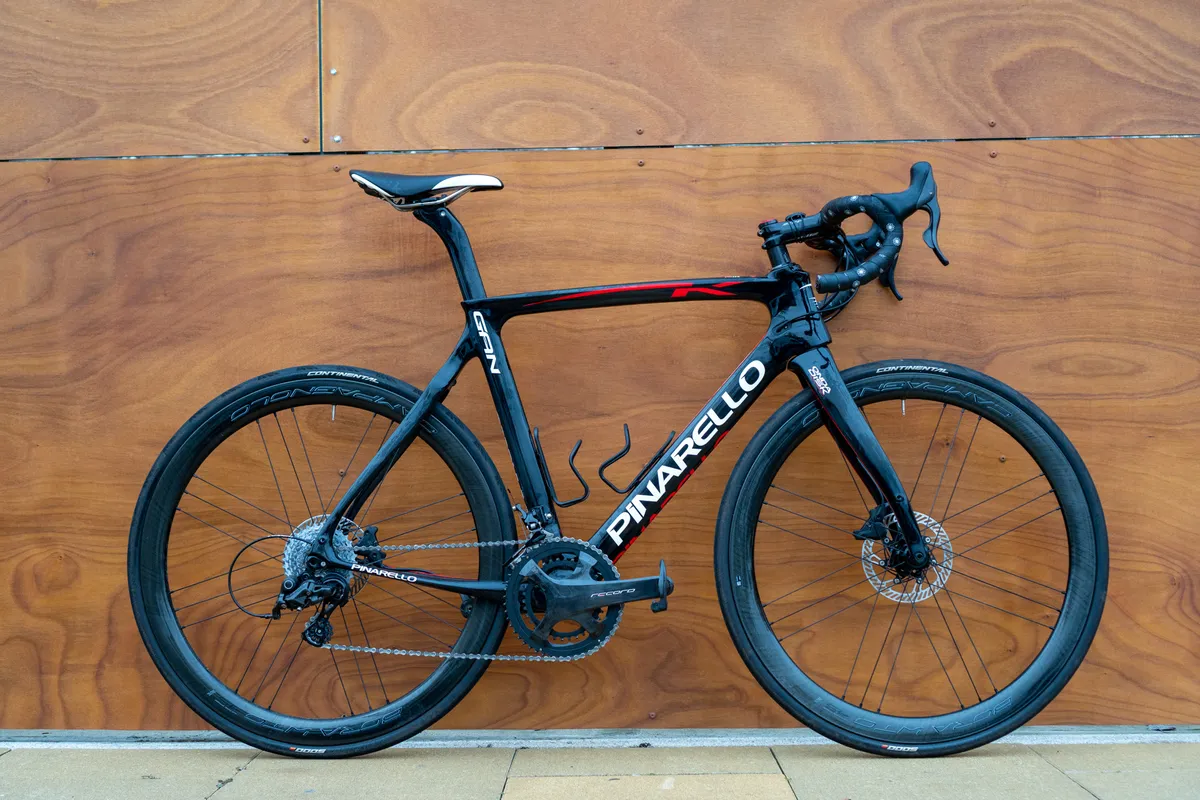
Technically, the Pinarello GAN K I built in 2022 is an endurance bike, but I ended up downsizing to achieve a slightly racier position.
I still like riding fast though, and the Look needs to be capable of smashing out club runs and holding its own on the Tuesday evening summer pacelines.
I’m really intrigued by the wider 34mm tyre clearance. The wider tyres will undoubtedly improve comfort and it’s always wise to have slightly more clearance than you need to avoid worrying about a maxed-out tyre abrading the inside of the chainstays.
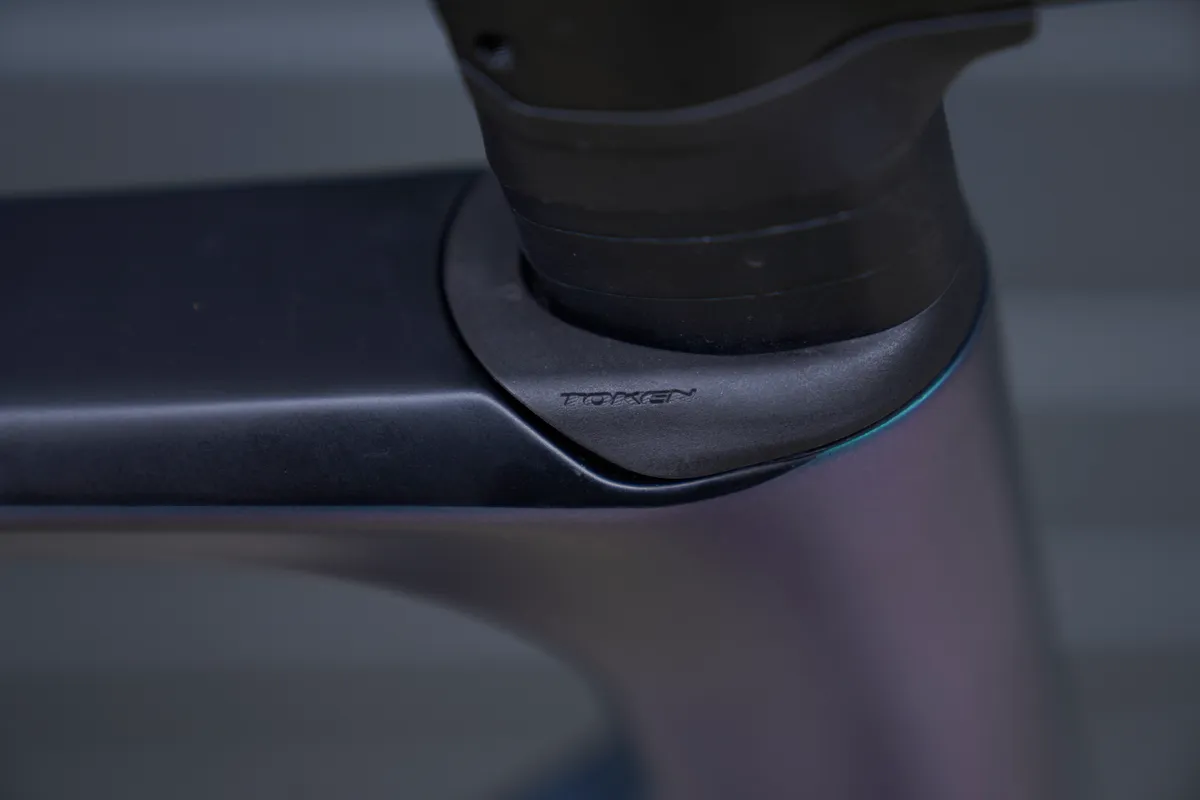
I tend to shy away from integration and would rather do without it to avoid the hassle of having to undo the hydraulic lines every time I service or replace a headset bearing. Some systems are needlessly over-complicated, making adjusting the handlebar height difficult too.
While the omen of replacing the headset looms in the future, at first glance, Look’s system seems to be better designed.
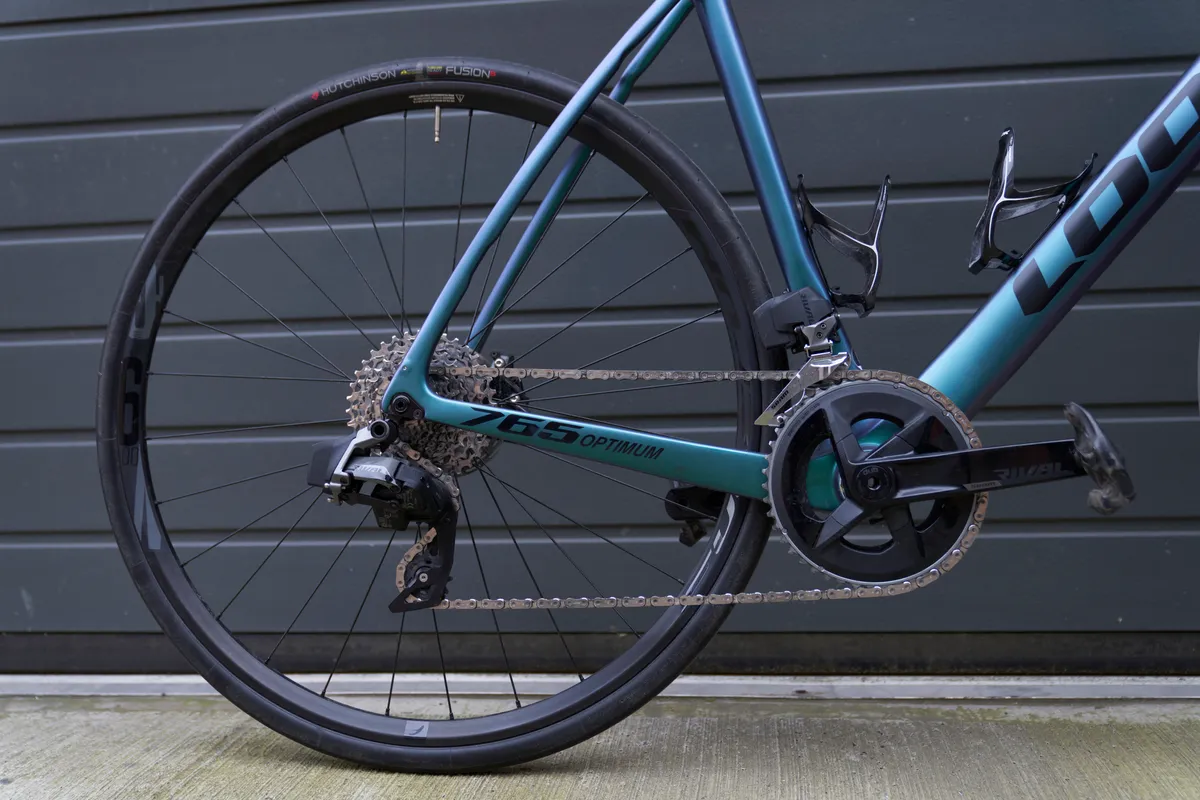
Although I’ve ridden and owned bikes with electronic groupsets before, I don’t have long-term experience of SRAM Rival eTap AXS in its 2x guise. I have experience of this groupset in its 1x XPLR variant on the Berria Belador Allroad gravel bike I tested last year.
Truth be told, I originally requested the 765 Optimum in its Campagnolo Chorus build because that really sung to my heart, but it sadly wasn’t available. In my opinion, Campagnolo’s hydraulic disc brakes are the best of the Big Three and I really get on with the lever ergonomics.
Look 765 Optimum initial setup
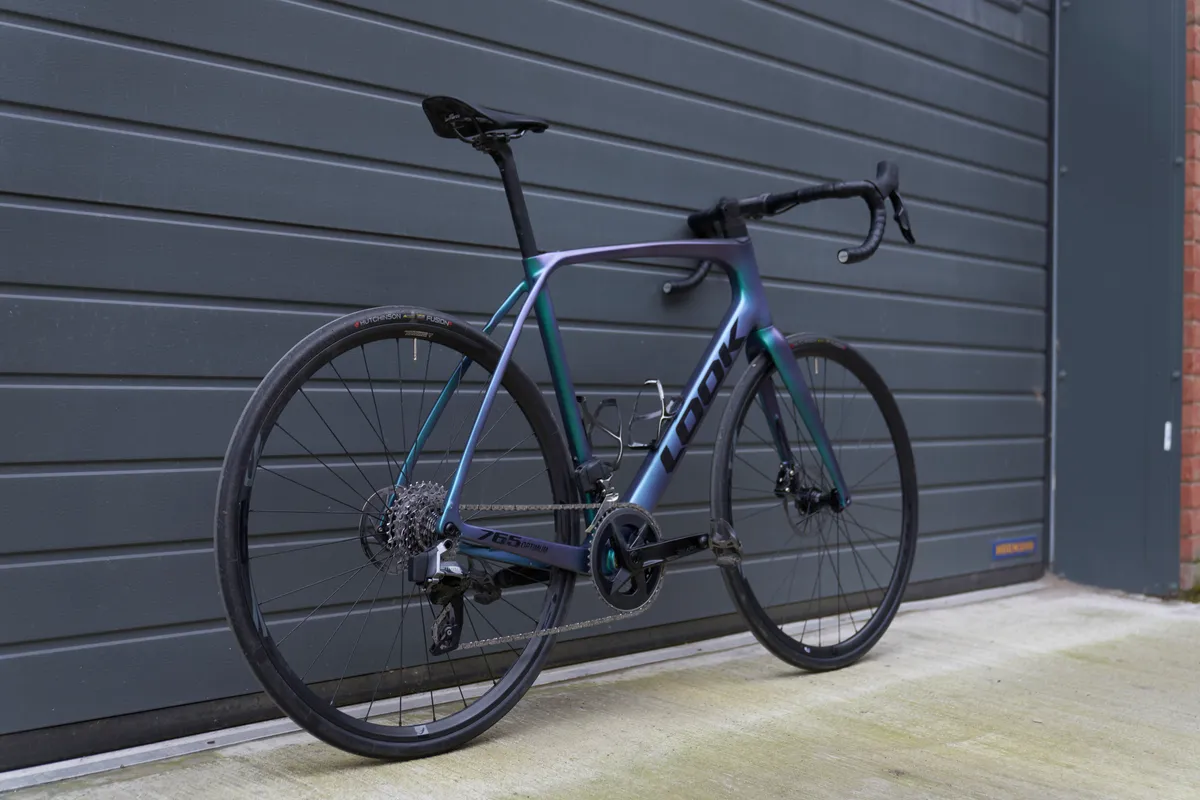
The 765 Optimum was easy to set up out of the box. All that was required was to install the seatpost and set the saddle height, play around with the angle of the handlebar and pump up the tyres.
As with any bike, I checked the bike thoroughly with a torque wrench and made sure the brakes and gears were optimally adjusted.
The bike came supplied with Look carbon bottle cages.
The handlebar height is higher than I’d typically run and I may experiment with lowering the bars by a spacer or two soon.
The reach is on the longer side for me, although I suspect reducing the stem to 100mm would shorten the reach too much. I will probably look to swap out the handlebars for ones with a shorter reach, which should do the trick.
Look 765 Optimum ride impressions
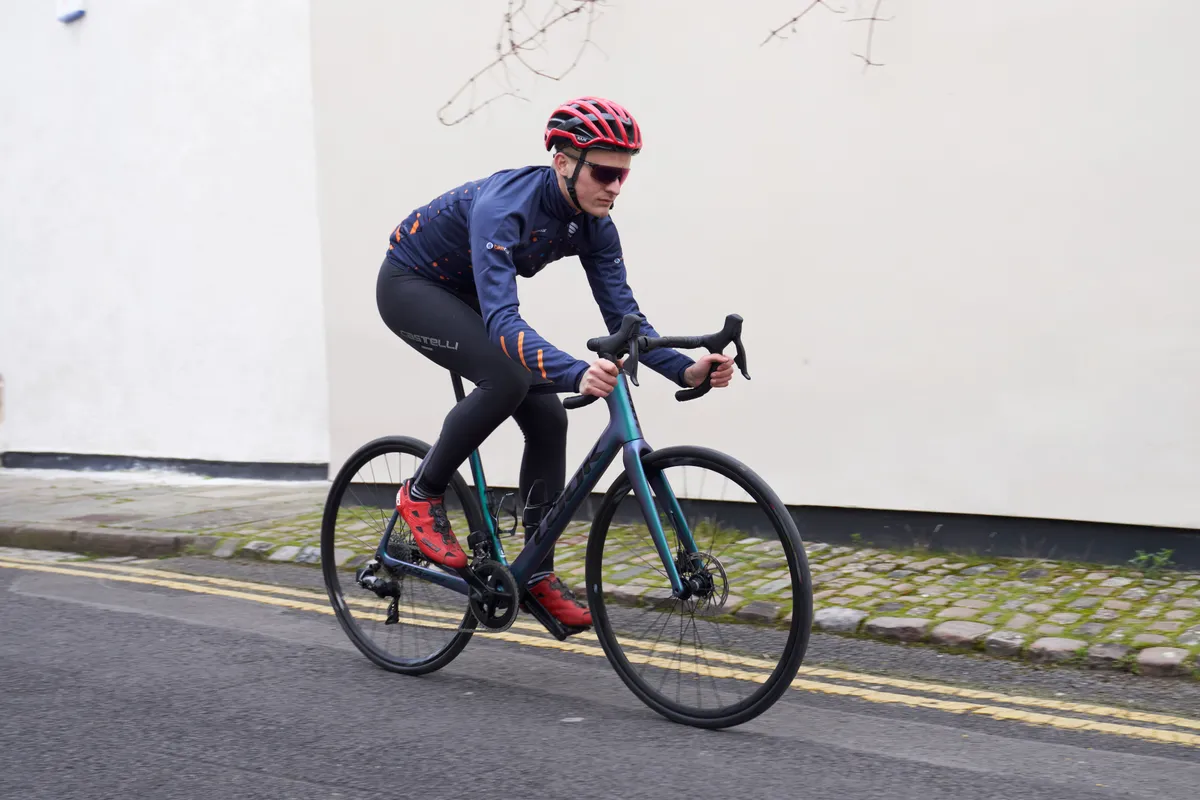
The 765 Optimum felt at home immediately, with a reassuringly stable ride feel.
My first two rides were in my home territory of the Chilterns – the first a glorious 55-mile shakedown before stepping up to an extended club run to tick off my February century.
Since then, I’ve been riding on the roads around Bristol.
The 765 Optimum is a comfortable, if not the most exciting platform to climb on. It lacks some of the sheer pace of a race bike, which tends to encourage you uphill. I’d put the slightly lethargic handling uphill down to the slacker head tube angle and the heavy stock wheels.

The 765 Optimum excels downhill. The slacker head tube angle, longer stem and wide 30mm tyres make the bike easy to handle and it corners beautifully.
Compared to racier bikes, the 765 Optimum doesn’t require a lot of rider input, and it feels as though you can ride more on autopilot.
Make no mistake, I still admire a race bike’s nimble feel – it’s simply a case of swings and roundabouts, and the 765 Optimum offers a different descending characteristic than I’m accustomed to.
The 765 Optimum holds its speed well on the flats, and is more than up to the job on higher-speed rides, even with the heavy stock wheels.

My impressions of the SRAM Rival eTap AXS groupset are mixed so far. The rear shifting is precise and crisp, albeit noticeably slower than Shimano’s Di2. The brakes are also terrific, with ample power and modulation.
I was worried the jumps between cogs on the 10-36 cassette would be too large, but I haven’t found this to be the case. It’s refreshing to be able to crest most climbs generally, having a gear or two to spare.
However, I don’t love the shifter ergonomics – I prefer the more bulbous construction and supple hood material of Red and previous-generation Force. The slight ridge at the base of the hood is uncomfortable, especially on longer rides.
Although I’m yet to ride the latest generation of Force, I’m worried SRAM is moving away from a good thing with its new hood design.
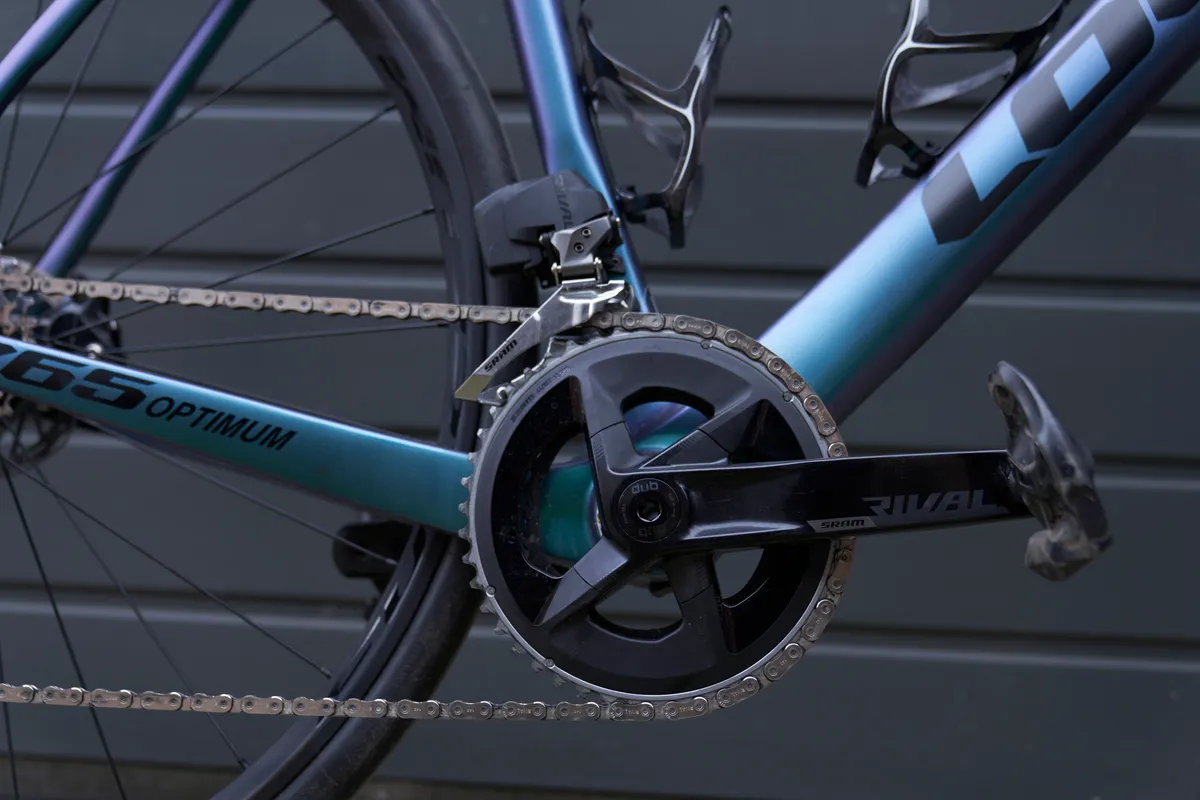
While acceptable, the front-derailleur shift speed and precision just aren’t on a par with Shimano, and it’s definitely best to avoid shifting under load.
The bike is heavy at 8.79kg, but you don’t really notice the extra weight when riding. The Fulcrum Racing 900 DB wheels contribute to this at a portly 1,950g, especially compared to wheels specced on similarly priced bikes. They are also 19mm wide internally, which is pretty narrow by today’s standards – most modern road rims tend to be around 21mm.
I’ve found the short-nosed San Marco saddle is fine for rides of up to four hours, but my behind really began to complain on the century ride, which was over six hours.
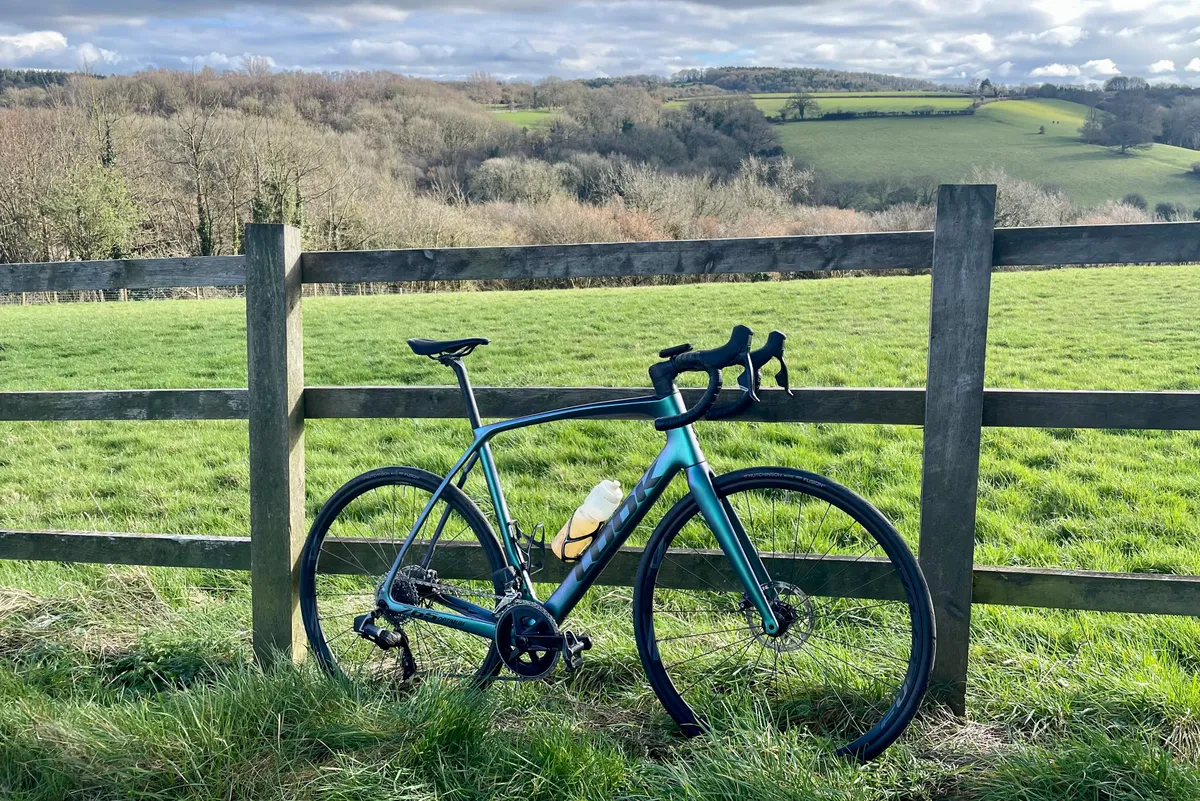
While the stem has a sleek aesthetic, I’d prefer a 40cm-wide handlebar. My arms felt splayed out on the own-branded 42s specced.
The aluminium seatpost inevitably transmits more feedback than a carbon one would.
There’s some unwanted rattling when riding over bumpy surfaces. I’ll be taking a look at this shortly and have a few suspicions as to what it could be.
The £4,690 asking price isn't especially competitive if you compare the bike to the likes of Giant, Canyon or Cannondale. The quality of the own-branded finishing kit also isn't quite up there with its competitors. However, it is important to bear in mind you’re investing in a flagship frame, with lots of attention to detail.
If you spend more on a different model in the range, you’re still getting the same frameset and not many brands offer their flagship frame at this price point.
Look 765 Optimum upgrades
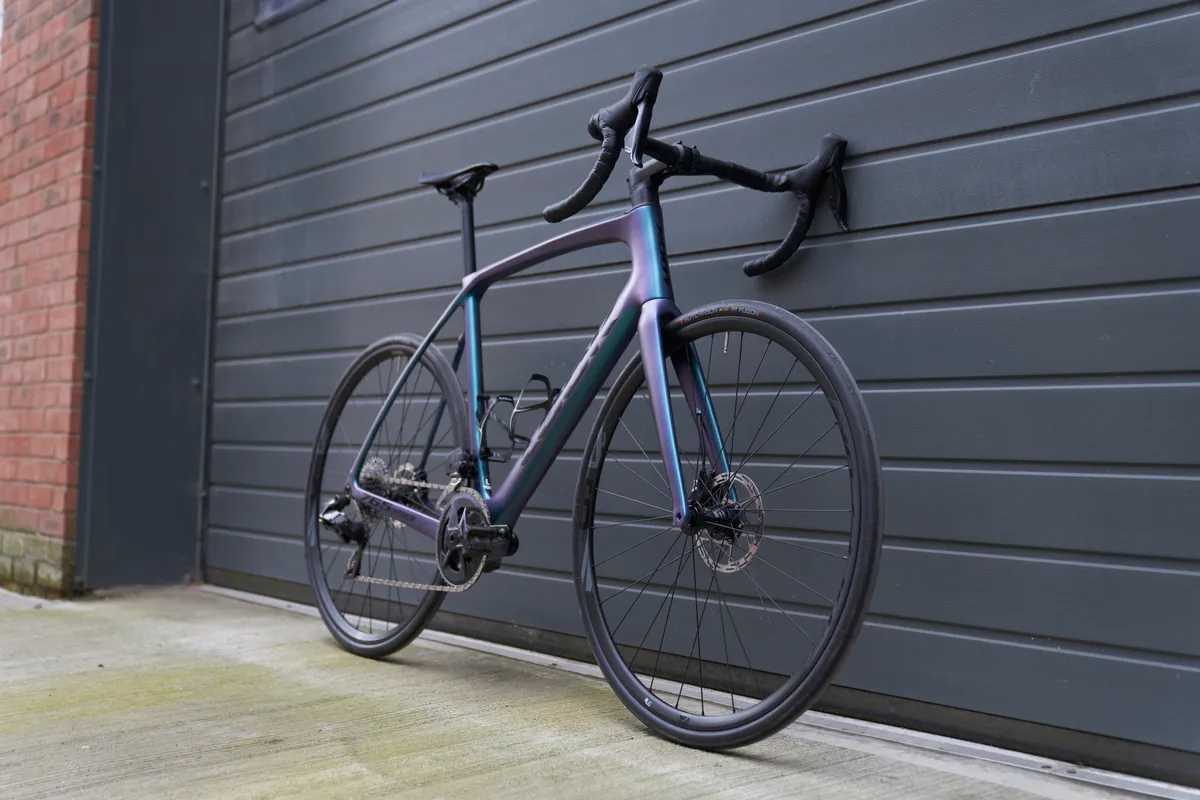
I selected the Look 765 Optimum for a long-term test because it's a perfect platform with which I can indulge in upgrades.
It would be easy to mark a bike down for being under-specced, but I don’t think it’s necessarily a negative in this scenario.
The money is going into the frameset and that’ll always have a greater influence on the ride quality than a swanky groupset.
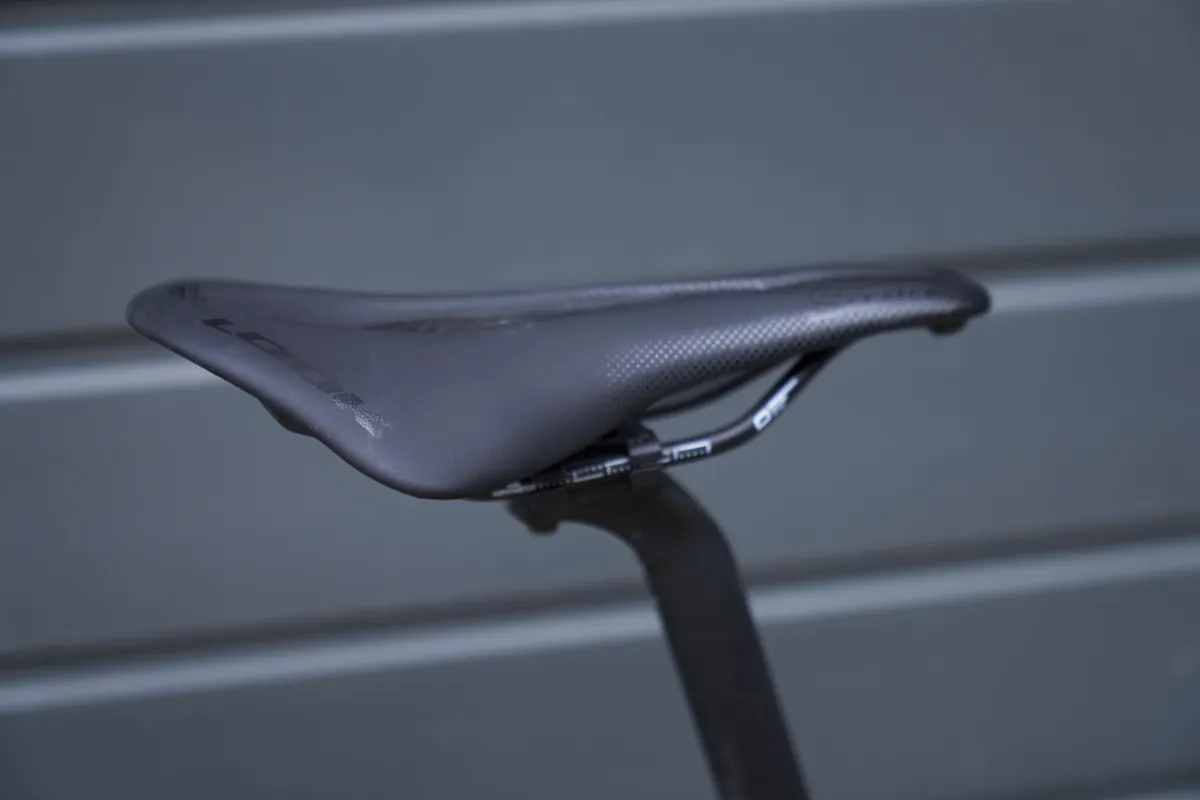
My first swap will be the saddle – if I’m going to ride more centuries this year, I want to do so in comfort.
The wheels are also ripe for updating, but I can see why Look specced them. At £180, they keep the asking price of the bike sensible(ish), but a fancier set will really liven up the bike.
I’ll be looking for a much lighter, and possibly slightly deeper, wheelset. A wheelset under the 1,500g mark would knock almost 500g off the bike’s weight.
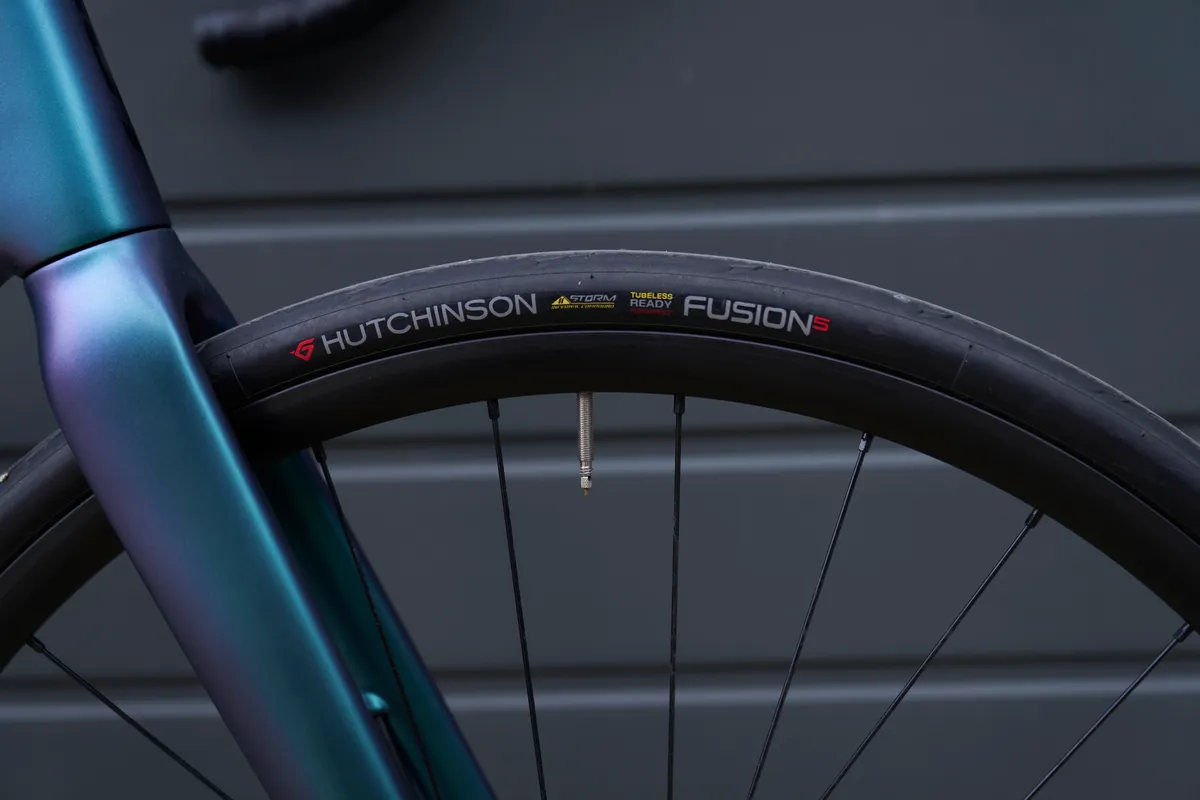
While the Hutchinson Fusion 5 tyres are fine, they’re not the grippiest and I’d like to experiment with wider tyres. A set of Continental GP5000 S TR tyres in a 32mm width sounds just the ticket.
I’ll also upgrade the handlebar to a narrower 40cm option and likely carbon too for the extra compliance. A carbon seatpost would also take some of the sting away on longer sojourns.
BikeRadar’s long-term test bikes
BikeRadar's long-term test bikes give our team the opportunity to get to grips with these machines, so we can tell you how they perform through different seasons and on ever-changing terrain, through a year of riding.
Some choose a bike from their favoured discipline and ride it hard for a year, others opt for a bike that takes them outside their comfort zone.
We also use our long-term bikes as test beds for the latest kit, chopping and changing parts to see what really makes the difference – and help you decide which upgrades are worth spending your money on.
These bikes also provide an insight into the team's riding through the year – how they like to ride and where life on two wheels takes them, from group rides on local lanes and trails, to adventures further afield.
To see all of the BikeRadar team’s long-term test bikes – and to stay up-to-date with the latest updates – visit our long-term review hub.
Product
| Brand | Look |
| Price | €4690.00, £4690.00, $5500.00 |
| Weight | 8.79kg |
Features
| Fork | Look 765 Optimum, HR carbon |
| Stem | Look LS3 Alloy (XS 80, S 90, M 100, L 110, XL 120) |
| Chain | SRAM Rival |
| Frame | Look 765 Optimum, HR carbon |
| Tyres | Hutchinson Fusion 5 tubeless-ready, 700c x 30mm |
| Brakes | SRAM Rival, 160 rotor front, 140 rotor rear |
| Cranks | SRAM Rival DUB |
| Saddle | Look by San Marco ShortFit |
| Wheels | Fulcrum Racing 900 DB 2WF C19 |
| Headset | Token |
| Shifter | SRAM Rival eTap AXS |
| Cassette | SRAM XG1250, 10-36 |
| Seatpost | Look LS3 Alloy, 27.2mm, 350mm length |
| Handlebar | Look LS2 Alloy (XS/S - 40cm, M/L - 42cm, XL - 44cm) |
| Bottom bracket | T47 85.5mm SRAM DUB |
| Available sizes | XS, S, M, L, XL |
| Rear derailleur | SRAM Rival eTap AXS, 12-speed |
| Front derailleur | SRAM Rival eTap AXS |
